

How Zara’s strategy made her the queen of fast fashion
Table of contents, here’s what you’ll learn from zara's strategy study:.
- How to come up with disruptive ideas for your industry.
- How finding the right people is more important than developing the best strategy.
- How best to address the sustainability question.
Zara is a privately held multinational clothing retail chain with a focus on fast fashion. It was founded by Amancio Ortega in 1975 and it’s the largest company of the Inditex group.
Amancio Ortega was Inditex’s Chairman until 2011 and Zara’s CEO until 2005. The current CEO of Zara is Óscar García Maceiras and Marta Ortega Pérez, daughter of the founder, is the current Chairwoman of Inditex.
Zara's market share and key statistics:
- Brand value of $25,4 billion in 2022
- Net sales of $19,6 billion in 2021
- 1,939 stores worldwide in 2021
- Over 4 billion annual visits to its website
- Inditex employee count of 165,042 in 2021
{{cta('ba277e9c-bdee-47b7-859b-a090f03f4b33')}}

Humble beginnings: How did Zara start?
Most people date Zara’s birth to 1975, when Amancio Ortega and Rosalia Mera, his then-wife, opened the first shop. But, it’s impossible to study the company’s first steps, its initial competitive advantage, and strategic approach by starting at that point in time.
When the first Zara shop opened, Amancio Ortega already had 22 years of industry experience, ten years as a clever and hard-working employee, and 12 years as a business owner. Rosalia Mera also had 20 years of industry experience.
As an employee , Ortega worked in the clothing industry, first as a gofer and then as a delivery boy. He quickly demonstrated great talent for recognizing fabrics, understanding and serving customers, and making sound business suggestions. Soon, he decided to use his insights to develop his own business instead of his boss’s.
As a business owner , he started GOA Confecciones in 1963, along with his siblings, his wife, and a close friend. They started with a humble workshop making women’s quilted dressing gowns, following a trend at the time Amancio had noticed. Within ten years, that workshop had grown to support a workforce of 500 people.
And then, the couple opened the first Zara shop.
Zara’s competitive positioning strategy in its first year
The opening of the first Zara shop in 1975 wasn’t just a new store to sell clothes. It was the final big move of a carefully planned vertical integration strategy.
To understand how the strategy was formulated , we need to understand Amancio’s first steps. His first business, GOA Confecciones, was a manufacturing business. He was supplying small stores and businesses with his products, and he wasn’t in contact with the end customer.
That brought two challenges:
- A lack of insight into market trends and no direct consumer feedback about preferences.
- Very low-profit margins compared to the 70-80% profit margin of retailers.
Amancio developed several ideas to improve distribution and get a direct relationship with the final purchaser. And he was always updating his factories with the latest technological advancements to offer the highest quality of products at the lowest possible price. But he was missing one essential part to reap the benefits of his distribution practices: a store .
So, in 1972 he opened one under the brand name Sprint . An experiment that quickly proved unsuccessful and, seven years later, was shut down. Although it’s unknown the extent to which Amancio put his ideas to the test, Sprint was a private masterclass in the retail world that gave Amancio insights that would later turn Zara into a global success.
Despite Sprint’s failure, Amancio didn’t abandon the idea of opening his own store mainly because he believed that his advanced production model was vulnerable and the rise of a competitor who could replicate and improve his system was imminent.
Adding a store to his vertical integration strategy would have a twofold effect:
- The store would operate as a direct feedback source. The company would be able to test design ideas before going into mass production while simultaneously getting an accurate pulse of the needs, tastes, and fancies of the customers. The store would simultaneously reduce risk and increase opportunity spotting.
- The company would have reduced operating costs as a retailer. Since the group would control all aspects of the process (from manufacturing to distribution to selling), it would solve key retail challenges with stocking. The savings would then be passed on to the customer. The store would have an operational competitive advantage and become a potential cash cow for the company.
The idea was to claim his spot in prime commercial areas (a core and persistent strategic move for Zara) and target the rising middle class. The market conditions were tough, though, with many family-owned businesses losing their customer base, giant players owning a huge market share, and Benetton’s franchising shops stealing great shop locations and competent potential managers.
So the first Zara store had these defining characteristics that made it the successful final piece of Amancio’s strategy:
- It was located near the factory = delivery of products was optimized
- It was in the city’s commercial heart = more expensive, but with access to affluence
- It was located in the city where Ortegas had the most customer experience = knowing thy customer
- It was visibly attractive = expensive, but a great marketing trick
Amancio’s team lacked experience and expertise in one key factor: display window designing . The display window was a massive differentiator and had to be bold and attractive. So, Amancio hired Jordi Bernadó, a designer with innovative ideas whose work transformed display windows and the sales process.
The Zara shop was a success, laying the foundations for the international expansion of the Inditex group.
Key Takeaway #1: Challenge your industry’s conventional wisdom to create a disruptive strategy
Disrupting an industry isn’t an easy task nor a frequent occurrence.
To do it successfully, you need to:
- Understand the prominent business mode of your industry and the forces that contributed to its development.
- Challenge the assumptions behind it and design a radically different business model.
- Develop ample space for experimentation and failures.
The odds of instantly conquering the industry might be low (otherwise, someone would have already done it), but you’ll end up with out-of-the-box ideas and a higher sensitivity to potential disruptors in your competitive arena.
Recommended reading: How To Write A Strategic Plan + Example
How Zara’s supply chain strategy is at the core of its business strategy
According to many analysts, the Zara supply chain strategy is its most important innovative component.
Amancio Ortega and other senior members of the group disagree. Nevertheless, the Inditex logistics strategy is extraordinarily efficient and plays a crucial role in sustaining its competitive advantage. Most companies in the clothing retail industry take an average of 4-8 weeks between inception and putting the product on the shelf. The group achieves the same in an average of two weeks. That’s nothing short of extraordinary.
Let’s see how Zara developed its logistics and business strategy.
Innovative logistics: how Zara’s supply chain evolved
The logistics methods developed by companies are highly dependent on external factors.
Take, for example, infrastructure. In the early days of Zara, when it was expanding through Spain, the company considered using trains as a transportation system. However, the schedule couldn’t keep up with Zara’s needs, which had the goal of distributing products twice a week to its shops. So transportation by road was the only way.
However, when efficiency is a high priority, it shapes logistics processes more than anything else.
And for Zara, efficient logistics was – and still is – of the highest priority.
Initially, leadership tried outsourcing logistics, but the experiment failed and the company assigned a member of the house with a thorough knowledge of the company's operating philosophy to take charge of the project. The tactic of entrusting important big projects to employees imbued with the company’s philosophy became a defining characteristic.
So, one of Zara’s early strategic decisions was that each shop would make orders twice a week. Since the first store was opened, the company has had the shortest stock rotation times in the industry. That’s what drove the development of its logistics methods. The whole strategy behind Zara relied on quick production and distribution. And the proximity of manufacturing and distribution was essential for the model to work. So Zara had these two centers in the same place.
Even when the brand was expanding around the world, its logistics center remained in Arteixo, Spain, despite being a less-than-ideal location for international distribution. At some point, the growth of the brand, and Inditex as a whole, outpaced Arteixo’s capacity, and the decentralization question came up.
The debate was tough among leadership, but the arguments were strong. Decentralization was necessary because of:
- Safety and security. If there was a fire or any other crippling disaster there (especially on a distribution day), then the company would face serious troubles on multiple fronts.
- Arteixo’s limitations. The company’s center in Arteixo was reaching its capacity limits.
So the company decided to decentralize the manufacturing and distribution of its brands.
Initially, the group made the decision to place differentiated logistics centers where the management of its chain of stores was based, i.e. Bershka would have a different logistics center than Pull&Bear, although they were both part of the Inditex Group. That idea emerged after Massimo Dutti and Stradivarius became part of Inditex. Those brands already had that geographical structure, and since the group integrated them successfully into its strategy and logistics model, it made sense to follow the same pattern with its other brands.
Besides, the proximity of the distribution centers to the headquarters of each brand allowed them to consolidate them based on the growth strategy and purpose of each brand (more on this later).
But just a few years after that, the group decided to build another production center for Zara that forced specialization between the two Zara centers. The specialization was based on location, i.e. each center would manufacture products that would stock the shelves of stores in specific locations.
Zara’s supply chain strategy is so successful because it’s constantly evolving as the group adapts to external circumstances and its internal needs. And just like its iconic fashion, the company always stays ahead of the logistics curve.

Zara’s business strategy transcends its logistics innovations
Zara’s business strategy relies on four key pillars:
- Flexibility of supply
- Instant absorption of market demand
- Response speed
- Technological innovation
Zara is the only brand in the Inditex group that is concerned with manufacturing. It’s the first brand in the clothing sector with a complete vertical organization. And the production model requires the adoption or development of the latest technological innovations.
This requirement is counterintuitive in the clothing sector.
Most people believe that making big investments in a market as mature as clothing is a bad idea. But the Zara production model is very capital and labor intensive. The technological edge derived from that investment gave the company, in the early days, the capability to manufacture over 50% of its own products while maintaining an extremely high stock rotation frequency.
Zara might be one of the best logistics companies in the world, but that particular excellence is a supporting factor, or at least a highly contributing factor, to its successful business strategy.

Zara’s business strategy is so much more than its supply chain strategy.
The company created the “fast fashion” term and industry. When other companies were manufacturing their collections once per season, Zara was adapting its collection to suit what people asked for on a weekly basis. The idea was to offer fashionable items at a fair price and faster than everybody else.
Part of its cost-cutting strategic priority was its marketing strategy. Zara didn’t – and still doesn’t – advertise like the rest of the clothing industry. Its marketing strategy starts with choosing the location of the stores and ends with advertising that the sales period has started. In the early years of the brand’s expansion, Amancio would visit potential store locations himself and choose the site to build the Zara shop.
The price was never an issue. If the location was in a commercial center, Zara would build its store there no matter how high the cost was because the company expected to recoup it quickly with increased sales.
Zara’s marketing is its own stores.
The strategy of Zara and her Inditex sisters
Despite Zara’s success (or because of it), Amancio Ortega created – or bought – multiple other brands that he included in the Inditex group, each one with a specific purpose.
- Zara was targeting middle-class women.
- Pull&Bear was targeting young people under twenty-five years old with casual clothing.
- Bershka was targeting rebel teens, especially girls, with hip-hop-style clothing.
- Massimo Dutti was targeting both sexes with more affluence.
- Stradivarius was competing with Bershka, giving Inditex two major brands in the teenage market.
- Oysho was concentrating on women's lingerie.
- Zara Home manufactures home textiles and decor.
Pull&Bear was initially targeting young males between the ages of 14 and 28. Later it extended to young females of the same age and focused on selling leisure and sports clothing. It has the slowest stock turnaround time in the group.
Bershka’s target group was girls between 13 and 23 years of age with highly individualized tastes. Prices were low, but the quality average. Almost a fiasco in the beginning, it underwent a successful strategic turnaround becoming today one of the biggest growth opportunities for the group. And out of all the Inditex chains, Bershka has the most creative designs.
Massimo Dutti was the first retail brand Amancio bought and didn’t create himself. Its strategy is very different from Zara, producing high-quality products and selling them at a high price. It’s an extension of the group’s offer to the higher end of the price spectrum in the fashion industry. It’s also the only Inditex chain brand that advertises regularly.
Stradivarius was the second acquired brand, with the purchase being a defensive move. The chain shares the same target group with Bershka, making it, to this day, a direct competitor.
Oysho started as an underwear and lingerie company. Its product lines evolved to include comfortable night and homewear along with swimwear and a very young children’s line. The brand’s strategy was aggressive from its conception, opening 286 stores in its first six years of existence.
Zara Home is the youngest brand in the Group and the only one outside the clothing sector, though still in the fashion industry. It was launched with the least confidence and with immense prior research. An experiment to extend the Zara brand beyond clothing, it was based on the conservative view that Zara could extend its product categories only to textile items for the home. But it turned out that customers were more accepting of Zara Home selling a wide variety of domestic items. So the brand made a successful strategic pivot.

Key Takeaway #2: The right people are more important than the best strategy
It might not be obvious in the story, but a key reason for Zara's and Inditex’s success has been the people behind them.
For example, a vast number of people in various positions from inside the group claim that Inditex cannot be understood without Amancio Ortega. Additionally, major projects like the development of Zara’s logistics systems and the group's international expansion had such a success precisely because of the people in charge of them.
Zara’s radically different model was a breakthrough because:
- Its leadership had a clear vision and a real strategy to execute it.
- People with a deep understanding of the company’s philosophy led Its largest projects.
Sustainability: Zara’s strategy to make fast fashion sustainable
Building a sustainable business in the fast fashion industry is a tough nut to crack.
To achieve it, Inditex has made sustainability a cornerstone of its business model. Its strategy revolves around the values of collaboration , transparency, and innovation . The group’s ambition is to make a positive impact with a vision of prosperity for the planet and its people by transforming its value chain and industry.
Inditex’s sustainability commitments and strategy to achieve them
Inditex has developed a sustainability roadmap that extends up to 2040 with ambitious goals. Specifically, it has committed to
- 100% consumption of renewable energy in all of its facilities by 2022 (report pending).
- 100% of its cotton to originate from more sustainable sources by 2023.
- 100% of its man-made cellulosic fibers to originate from more sustainable sources by 2023.
- Zero waste from its facilities by 2023.
- 100% elimination of single-use plastic for customers by 2023.
- 100% collection of packaging material for recycling or reuse by 2023.
- 100% of its polyester to originate from more sustainable sources by 2025.
- 100% of its linen to originate from sustainable sources by 2025.
- 25% reduction of water consumption in its supply chain by 2025.
- Net zero emissions by 2040.
The group’s commitments extend beyond environmental issues to how its manufacturing and supplying partners conduct their business . To bring its strategy to fruition, it has set up a new governance and management structure.
The Board of Directors is responsible for approving Inditex’s sustainability strategy. The Sustainability Committee oversees and controls all the proposals around the social, environmental, health, and safety impact of the group’s products, while the Ethics Committee makes sure operations are compliant with the rules of conduct. There is also a Social Advisory Board that includes external independent experts that advises Inditex on sustainability issues.
Finally, Javier Losada, previously the group’s Chief Sustainability Officer and now promoted to Chief Operations Officer, will be leading the sustainability transformation of the group. Javier Losada first joined Inditex back in 1993 and ascended its rank to reach the C-suite.
Inditex is dedicated to its commitment to reducing its environmental impact and seems to be headed in the right direction. The only question is whether it’s fast enough.
Key Takeaway #3: Integrating sustainability with business strategy is a present-day necessity
Governments and international bodies around the world are implementing more stringent environmental regulations, forcing companies to commit to ambitious goals and developing a realistic strategy to achieve them.
The companies that are impacted the least are those that always had sustainability as a high priority .
From the companies that require significant changes in their operations to comply with the new regulations, only those who integrate sustainability into their business strategy and model will succeed.
Why is Zara so successful?

Zara is the biggest Spanish clothing retailer in the world based on sales value. Its success is due to its fast fashion strategy that is based on a strong supply chain and quick market feedback loops.
Zara's customer-centric approach places a strong emphasis on understanding and responding to customer needs and preferences. This is reflected in the company's product design, marketing, and customer service strategies.
Zara made fashionable clothes accessible to the middle class.
Zara’s vision guides its future
Zara's vision, as part of the Inditex Group, is to create a sustainable fashion industry by promoting responsible consumption and production, respecting the environment and people, and contributing to the communities in which it operates.
The company aims to offer the latest fashion trends to its customers at accessible prices while continuously innovating and improving its operations and processes.
Growth by numbers (Inditex)
|
|
|
|
|
| $12,5 billion | $27,72 billion |
|
| 100,138 | 165,042 |
|
| 5,044 | 6,477 |
|
| $46.44 billion | $98.10 billion (Feb, 2023) |

How Zara became the undisputed king of fast fashion?
Zara is one of the biggest international apparel brands. Zara invites customers from around 93 markets to its organization of 2000+ stores in upscale markets on the planet’s biggest urban communities. With these stores, Zara generates 18 billion Euros annually.
The brand has been fruitful in keeping up its central goal to give quick and reasonable designs in the world of fashion. Zara’s way to deal with configuration is firmly connected to its clients. This story is about how Zara became the undisputed king of Fast fashion.
Fashion is the imitation of a given example and satisfies the demand for social adaptation. . . . The more an article becomes subject to rapid changes of fashion, the greater the demand for cheap products of its kind. — Georg Simmel, “Fashion” (1904)
History of Zara: The Long Story Cut Short
Amancio Ortega launched the first Zara store in 1975 in Central Street in downtown A Coruna, Galicia, Spain. The main Store included low-value look-a-like designs of famous and better-quality dress styles. The store ended up being a triumph and Ortega Began opening more Zara stores throughout Spain.
During the 1980s, Ortega began changing the plan, assembling and dissemination cycle to diminish lead times and respond to new patterns in a snappier manner in what they called “Moment Fashions”.
In 1980 the company started its international expansion through Porto, Portugal in the 1990s, with Mexico in 1992. Since then Ortega has continued to grow and create brands such as Pull & Bear, Bershka , and Oysho . It has acquired groups like Massimo Dutti and Stradivarius . Even though these brands have been contributors to their parent group Inditex’s success, Zara is still the principal growth driver.
Zara’s Customer-driven Value Chain
Product line-up:.
Unlike other Inditex chains, Zara has focused on manufacturing fashion-sensitive products internally. The latest designs were continuously in production as per changing customer’s preferences. Many competitors were producing just a few thousand SKUs whereas Zara was producing several hundred of thousands of SKUs in a year. These SKUs varied as per color, size, and fabric.
Zara’s designs are not dependent on design maestros. Instead, its designers carefully observe the catwalk trends and try to implement them for the mass market. The design team continuously creates variations in a particular season. Thereafter expanding on successful designs.
Fast Supply Chain:
Zara’s flexible supply chain allows it to dispatch new ranges to shops two times per week from its central distribution center that is an approximately 400,000-square-meter facility located in Arteixo, Spain. This kind of business system called vertical integration eliminated the need for local warehouses. The strategy here was to reduce the “bullwhip effect”. Let’s see what the bullwhip effect is:
The bullwhip effect is a distribution channel phenomenon in which demand forecasts yield supply chain inefficiencies. It refers to increasing swings in inventory in response to shifts in consumer demand as one moves further up the supply chain. Wikipedia

It was a matter of a few weeks and a new design was on the shelf for the customers. Isn’t cool? These designs of clothes and accessories were quickly moved to fancy stores in prime locations but at a cheap price. This strategy has attracted a lot of fashion yet money conscious customers.
We want our customers to understand that if they like something, they must buy it now because it won’t be in the shops the following week. It is all about creating a climate of scarcity and opportunity. Luis Blanc, one of the former Inditex’s international directors
Zara’s Retailing Strategy
Zara instead of focusing on improving its manufacturing efficiency focused on improving its retail strategy. This retailing strategy was about following fashion trends quickly even it means there is an unmet demand. As was previously discussed, this also helped Zara in creating a FOMO for its products. The two components of its retailing strategy were dependent on its upstream operations: Merchandizing and Stores.
Read: The Torchbearers of Sustainable Fashion
Merchandising.
Merchandising is the promotion of goods and/or services that are available for retail sale. It includes the determination of quantities, setting prices for goods and services, creating display designs, developing marketing strategies, and establishing discounts or coupons. Investopedia
- Zara placed emphasis on the freshness of its designs. It wanted to create a sense of exclusivity. It never focused on creating bulk items of one design. Zara had confidence in its fast supply chain of twice a week shipment to the store with the latest designs. Thre quarter of its merchandise gets replaced in just a month. How about that?
The success of your business is based in principle on the idea of offering the latest fashions at low prices, in turn creating a formula for cutting costs: an integrated business in which it is manufactured, distributed, and sold. Amancio Ortega
Fun Fact : An average customer visits a Zara store 17 times in a year where the number is 3-4 times for its competitors.
- Zara understood the importance of store locations very well. Zara prices are not expensive but its store location and design made its products look expensive. The brand wanted its customers to have a premium feel at a reasonable price.
We invest in prime locations. We place great care in the presentation of our storefronts. That is how we project our image. We want our clients to enter a beautiful store, where they are offered the latest fashions. Luis Blanc, one of the former Inditex’s international directors
Store Operations
Zara has stores in most upscale markets and shopping centers in the world. You name it and they have a store there. Champs Elysées in Paris, Regent Street in London, and Fifth Avenue in New York to name a few. As per its latest annual report the value of these properties is valued at almost 8 billion Euros. But the way these stores are managed is a strategy to learn for all retailers.
- We all love grand stores with a lot of variety. Zara has emphasized on creating a grand image of its stores. Imagine a big store at a posh location. How much impressed you would be. The average size of Zara stores has continuously increased over the years. In 2001 the average store size was 910 sq.m whereas in 2018 the size has more than doubled.
Zara’s average store size has increased by 50%: from 1,452m2 in 2012 to 2,184m2 in 2018. That growth has been driven by new store openings – larger flagship stores – as well as the fact that many of the new openings have entailed the absorption of one or more older, smaller units in the same catchment area. Inditex Annual Report
- Zara has tried to standardize the in-store experience with its store window displays and interior presentations. As the season progresses, Zara consistently evolves its interior themes, color schemes, and product placements. All these ideas come from the central team in Spain and regional teams implement with necessary region-based adaptations. So much so that the uniforms of the staff were selected twice in a season by a store manager from the latest collection.
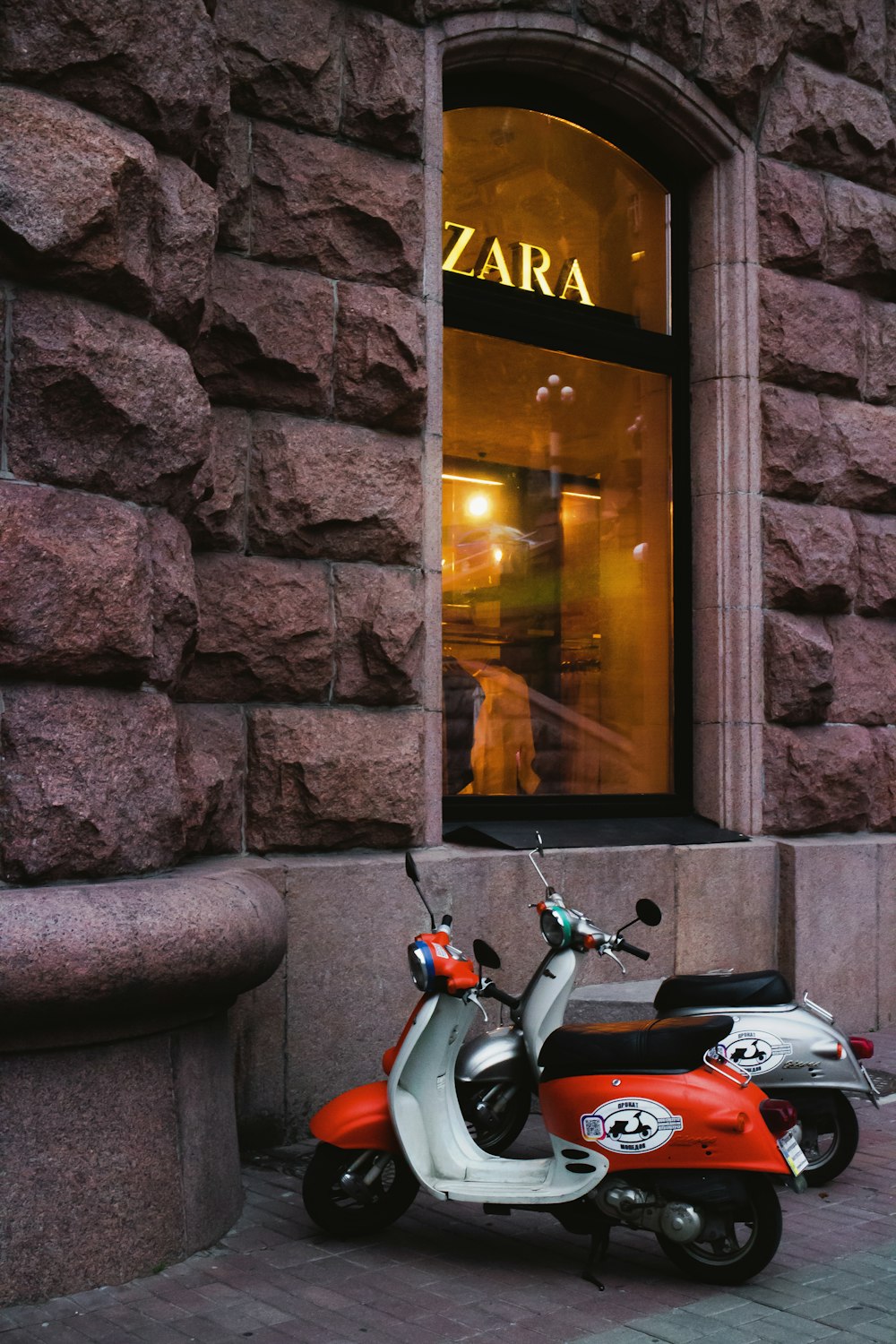
Anti-Marketing Approach of Zara
Zara has able to maintain profitability ~13% whereas its major competitor like H&M is at 6% . This has been possible not only because of its efficient supply chain we discussed above but also because of its no advertising or limited advertising policy.
This is what makes Zara really one of a kind. The organization just spends about 0.3% of deals on promoting and does not have a lot of advertising to discuss. The usual trend in the industry is to spend 3.5% on advertising. Zara never shows its clothes at expensive fashion shows also. It first shows its designs at stores directly. But why does not Zara believe in advertising? There are primarily two reasons:
- First, as we discussed it saves Zara a lot of money. So much so that it has now one of the highest profitability.
- Second, it brings exclusivity and prevents overexposure of a design. Customers feel like if they purchase a shirt at Zara, five others won’t have that equivalent shirt at work or school.
Read: Viral Marketing over the Long-Haul ft. Burger King
Zara is a perfect case study to learn the perfect operations strategy, perfect marketing strategy, perfect pricing strategy, and whatnot. It’s all strategies are so perfect. It is also a perfect example to understand how a traditional brand is evolving itself with time to stay relevant.
As per its annual report , In 2018, Zara launched its global online store, marking a milestone in its commitment to having all of its brands available online worldwide by 2020. Zara continued to earn global accolades for its collections and initiatives, its integrated shopping experience, and its commitment to sustainability, with over 90 million garments put on sale under the Join Life label.
Zara is just not a brand of fast fashion. Its much more than that now. And that’s why it’s actually the true king of fast fashion.
Interested in reading our Advanced Strategy Stories . Check out our collection.
Also check out our most loved stories below

IKEA- The new master of Glocalization in India?
IKEA is a global giant. But for India the brand modified its business strategies. The adaptation strategy by a global brand is called Glocalization

Why do some companies succeed consistently while others fail?
What is Adjacency Expansion strategy? How Nike has used it over the decades to outperform its competition and venture into segments other than shoes?

Nike doesn’t sell shoes. It sells an idea!!
Nike has built one of the most powerful brands in the world through its benefit based marketing strategy. What is this strategy and how Nike has used it?

Domino’s is not a pizza delivery company. What is it then?
How one step towards digital transformation completely changed the brand perception of Domino’s from a pizza delivery company to a technology company?

Why does Tesla’s Zero Dollar Budget Marketing work?
Touted as the most valuable car company in the world, Tesla firmly sticks to its zero dollar marketing. Then what is Tesla’s marketing strategy?

Microsoft – How to Be Cool by Making Others Cool
Microsoft CEO Satya Nadella said, “You join here, not to be cool, but to make others cool.” We decode the strategy powered by this statement.

A marketing aggregator, business story teller, freelancer. I'm pursuing my PGPM, and is a 2nd year marketing student at MDI.
Related Posts

AI is Shattering the Chains of Traditional Procurement

Revolutionizing Supply Chain Planning with AI: The Future Unleashed

Is AI the death knell for traditional supply chain management?

Merchant-focused Business & Growth Strategy of Shopify

Business, Growth & Acquisition Strategy of Salesforce

Hybrid Business Strategy of IBM

Strategy Ingredients that make Natural Ice Cream a King

Investing in Consumer Staples: Profiting from Caution

Storytelling: The best strategy for brands

How Acquisitions Drive the Business Strategy of New York Times

Rely on Annual Planning at Your Peril

How does Vinted make money by selling Pre-Owned clothes?

N26 Business Model: Changing banking for the better

Sprinklr Business Model: Managing Unified Customer Experience

How does OpenTable make money | Business model

How does Paytm make money | Business Model
Write a comment cancel reply.
Save my name, email, and website in this browser for the next time I comment.
- Advanced Strategies
- Brand Marketing
- Digital Marketing
- Luxury Business
- Startup Strategies
- 1 Minute Strategy Stories
- Business Or Revenue Model
- Forward Thinking Strategies
- Infographics
- Publish & Promote Your Article
- Write Article
- Testimonials
- TSS Programs
- Fight Against Covid
- Privacy Policy
- Terms and condition
- Refund/Cancellation Policy
- Master Sessions
- Live Courses
- Playbook & Guides
Type above and press Enter to search. Press Esc to cancel.
Zara's Marketing Strategy: A Deep Dive into Fast Fashion Dominance

The Spanish retail giant's meteoric rise to become the world's largest clothing retailer is not just a result of trendy designs but a carefully crafted marketing strategy that sets it apart. In this article, we delve into the intricate layers of Zara's marketing , uncovering the secrets behind its success. Before dissecting Zara's marketing strategy , it's crucial to understand the brand's roots. Founded in 1975 by Amancio Ortega and Rosalía Mera, Zara started as a small family business in Galicia, Spain. Its initial claim to fame was offering affordable lookalikes of high-end brands. However, the turning point came in 1985, when Zara became part of Inditex, adopting the "instant fashion" model. With the help of investments in information technology and designer groups, this revolutionary approach sought to shorten lead times and quickly adapt to changing fashion trends.
Zara's marketing strategy revolves around a modern approach to fashion, with a keen focus on the younger demographic, especially millennials. Understanding the need for trendy yet affordable fashion, Zara delivers the latest styles at competitive prices. Unlike traditional retailers, Zara boasts a vast assortment of over 450 million products annually. The brand's responsive supply chain ensures a constant influx of new items into stores twice a week, catering to the ever-changing preferences of its target market .
The 4P's Marketing Strategy
To comprehend Zara's marketing strategy comprehensively, we turn to the classical 4P's framework: product, place, price, and promotion. Each element plays a pivotal role in shaping Zara's success and distinguishing it in the highly competitive fashion industry.
1. Products
Zara, known as an "instant fashion" brand , swiftly identifies and incorporates the latest trends into its designs. The core strength of Zara's product strategy lies in its agility to adapt swiftly to emerging fashion trends. Unlike traditional retailers with lengthy production cycles, Zara's "fast fashion" model enables it to identify and integrate the latest styles into its collections rapidly. This approach not only aligns with the dynamic nature of consumer preferences but also positions Zara as a trendsetting brand , consistently offering fresh and relevant designs. Products are tailored to suit local cultures and tastes, maintaining a balance between affordability and quality. Zara's commitment to catering to diverse markets is reflected in its localized approach to product offerings. Recognizing the importance of cultural nuances, Zara tailors its designs to suit the tastes and preferences of specific regions. This localization strategy not only enhances customer relevance but also contributes to the brand's global appeal. Furthermore, Zara strikes a delicate balance between affordability and quality, ensuring that its products are accessible without compromising on craftsmanship.
Zara's global footprint includes nearly 3000 stores strategically located in high-street retail areas of major cities. Zara's emphasis on physical retail locations is a fundamental aspect of its place strategy. With a presence in nearly 3000 strategically chosen stores, Zara ensures maximum visibility and accessibility . Placing stores in high-street retail areas of major cities positions the brand at the forefront of fashion hubs, attracting the target demographic—the young and fashion-conscious. This strategic placement contributes to the brand's identity as a trendsetting and aspirational choice for consumers. A vertically integrated retailer, Zara handles design, manufacturing, and distribution in-house, ensuring a consistent brand experience worldwide. Zara's vertical integration is a distinctive feature that sets it apart from many competitors. By handling design, manufacturing, and distribution in-house, Zara maintains meticulous control over its supply chain. This vertical integration not only accelerates the production cycle but also ensures a consistent brand experience worldwide. From the design studio to the store shelves, Zara's in-house approach fosters agility, quality control, and a seamless brand image .
Zara's pricing strategy targets price-sensitive buyers seeking the latest fashion items. Zara's pricing strategy is strategically aligned with the preferences of its target audience: price-sensitive buyers with a penchant for the latest fashion trends. By offering affordable yet stylish products, Zara caters to a broad demographic, making fashion accessible to a larger consumer base. This pricing approach also complements Zara's fast-fashion model, encouraging frequent purchases and brand loyalty among cost-conscious consumers. The pricing structure varies based on locations and customer demographics, maintaining a balance between affordability and quality. Zara's flexibility in pricing extends beyond a one-size-fits-all approach. Recognizing the diversity in consumer demographics and economic conditions across regions, Zara adjusts its pricing structure accordingly. This tailored approach ensures that Zara products are not only affordable but also perceived as valuable, striking a harmonious balance between accessible pricing and the brand's commitment to quality.

4. Promotion
Unconventional in its approach, Zara spends minimally on traditional promotion campaigns. Zara's promotional strategy defies conventional norms by minimizing expenditure on traditional advertising . Instead of splurging on billboards or TV commercials, Zara relies on alternative methods to create brand buzz. This unconventional approach aligns with the brand's ethos of letting the products and customer experience speak for themselves. By diverting resources from traditional promotions, Zara maintains a cost-efficient model, allowing the focus to shift towards other impactful aspects of the marketing mix. The focus lies on word of mouth, store experience, and the power of social media channels for effective brand building . Word of mouth, augmented by a remarkable in-store experience and the influential reach of social media, constitutes the heart of Zara's promotional strategy. Satisfied customers become brand ambassadors , sharing their experiences and fashion finds within their social circles. Zara's investment in creating aesthetically pleasing and experiential stores serves as a powerful promotional tool. Moreover, the brand harnesses the potential of social media platforms, leveraging its millions of followers to organically amplify its brand message. Through engaging content, trend showcases, and interactive communication, Zara cultivates a community of loyal customers who actively contribute to the brand's promotion . In essence, Zara's mastery of the 4P's demonstrates a holistic and adaptive approach to marketing , where each element is intricately woven into the brand's DNA.
Marketing Tactics that Define Zara's Success
In a landscape where consumer preferences are ever-evolving, Zara employs distinct marketing tactics that set it apart, solidifying its position as a trailblazer in the fashion industry.
- Customer Experience Focus: Zara has astutely recognized that, in the new economy, customer experience reigns supreme, often overshadowing the product itself. The brand's fast-fashion formula is meticulously crafted to provide a frictionless shopping experience. This strategy goes beyond merely selling products; it creates an atmosphere of uniqueness and trendiness, resonating with buyers who seek not just items but an immersive shopping journey.
- Value for the Price: While Zara may not be the cheapest player in the fast-fashion industry, it consistently delivers trend-right products at prices that appeal to its target demographic. The brand's pricing strategy reflects a deep understanding of customer values, acknowledging that value is measured beyond the mere transactional aspect of price. This nuanced approach contributes significantly to Zara's strong brand value and resonance with its audience.
- The Power of Brand Loyalty: Zara has mastered the art of transforming frequent buyers into brand evangelists. The meaningful experiences and values associated with the brand inspire a sense of loyalty among customers. Social media channels serve as dynamic platforms for engagement, with Zara boasting millions of followers across various platforms. This digital presence not only amplifies the brand's reach but also nurtures a community of loyal enthusiasts who willingly become advocates for Zara.
- Convenient Physical Store Locations: Zara places a strategic emphasis on physical store locations, investing heavily in flagship stores positioned strategically in major metropolitan areas. The brand understands the importance of a physical presence and the impact of in-store appearances on customer perception. Moreover, Zara's integration of technology and mobile connectivity enhances the overall shopping experience, allowing customers seamless access to inventory and blurring the lines between online and offline retail.
- Data Analysis: Zara doesn't just follow trends; it actively shapes them through a sophisticated data infrastructure. Real-time analysis of market trends and customer insights empowers the brand to stay ahead of the curve. This data-driven approach encourages two-way communication, which ensures a continuous feedback loop and facilitates the improvement of services and goods. Zara's commitment to leveraging data underscores its agility and responsiveness to meet and exceed customer expectations in a rapidly changing fashion landscape.

Noteworthy Campaigns and Examples
While Zara may not engage in extensive traditional marketing campaigns, its strategic communication initiatives are nothing short of impactful, showcasing the brand's agility and attentiveness to its customer base.
- Customer-Driven Product Creation: One notable instance of Zara's responsiveness to customer needs occurred when a simple request for a pink scarf went beyond individual preferences. Zara, true to its "fast fashion" ethos, swiftly transformed this customer request into a global product launch within a mere seven days. This instance underscores Zara's ability to not only listen to its customers but to act on their preferences promptly, turning a singular request into a worldwide fashion phenomenon.
- Customization for Particular Buyers: The active participation of store managers and employees in gathering customer insights is an example of Zara's commitment to understanding its customers. This engagement goes beyond the transactional aspect, influencing product customization to align with specific needs. Whether it's considering cultural preferences, climatic conditions, or other personalized requirements, Zara's approach to tailoring its offerings based on individual insights showcases a level of customization that transcends the conventional retail experience.
- Innovations in Products: The launch of the "Edited" collection represents Zara's foray into online sales and customer-centric offerings. This innovative approach allows buyers to personalize their clothes online, providing a unique and engaging shopping experience. The "Edited" collection not only aligns with the broader trend of personalized shopping but also reflects Zara's commitment to staying at the forefront of technological advancements and evolving consumer expectations. It represents a strategic move towards not just selling products but curating an interactive and personalized fashion journey for each customer.
Zara, often lauded for its exceptional campaigns and lookbooks, stands shoulder to shoulder with luxury brands, showcasing an unparalleled knack for turning simple ideas into powerful, visually stunning images. Employing brilliant casting, meticulous set designs, and collaborations with renowned photographers like Steven Meisel, Zara's campaigns have become iconic moments in the fashion industry. Let's explore some of the brand's standout campaigns that have left an indelible mark.
Zara Women’s FW20 Campaign: Empowering Elegance
Zara's dedication to empowering elegance is best exemplified by the FW20 campaign, which Steven Meisel shot. Models like Rianne Van Rompaey and Mona Tougaard showcase the new collection through a series of black-and-white images. The campaign not only highlights the traditional tailoring codes but reinterprets them in a contemporary context, sending a powerful message of female empowerment. Tailored suits, Oxford shirts paired with vests, cozy coats, and punk-inspired brooches blend seamlessly to create a visual narrative that resonates with Zara's democratic style.
Zara Women’s SS20 Campaign: A Pandemic-Defying Experiment
Amid the challenges of the pandemic, Zara demonstrated its adaptability with the SS20 campaign. Unable to conduct traditional shoots, the brand turned to its models, including Malgosia Bela and Anja Rubik, to capture themselves at home. The result was a unique and intimate portrayal of models in their own environments, showcasing SS20 items. However, the experimental approach sparked both interest and controversy, with some criticizing the unconventional poses for hindering a clear view of the garments. This campaign not only addressed the constraints of the time but also raised questions about the balance between artistry and practicality in fashion marketing .
Zara TRF SS19 Lookbook: Roman Holiday Remixed

Matteo Montanari's lens takes us on a playful journey through Zara TRF's SS19 lookbook, titled "Bella Roma." Reminiscent of the classic film "Roman Holiday," models Elibeidy Dani and Laurijn Bijnen infuse the Eternal City with modern charm. The lookbook captures the essence of Vacanze Romane with silver-fringed dresses, sequins, metallic finishes, and bows. While not a traditional campaign, these images form a captivating lookbook that breathes life into the eternal allure of Rome.
Zara Women’s FW19 Campaign: Opulence Redefined
Steven Meisel and Fabien Baron collaborated to create opulent visuals for Zara's FW19 campaign. Through sophisticated and overlapping images, models like Julia Nobis and Adut Akech exude regal elegance. The campaign features printed dresses, Prince of Wales coats, and chunky golden jewels, all with an '80s aesthetic. Meisel's shots celebrate beauty, art, and fashion, elevating Zara's commitment to offering accessible yet luxurious styles.
Zara Women’s FW18 Campaign: Languid Luxury
The Steven Meisel-shot FW18 campaign immerses viewers in a world of extravagant luxury. Models like Lexi Boling and Fei Fei Sun recline on sofas and soft pillows, draped in long-sleeved dresses, velvet vests, and scarves. The images evoke the spirit of Yves Saint Laurent's 1976 Haute Couture winter collection, drawing inspiration from czarist Russia, Ballet Russes, and orientalist designs. Meisel's lens captures a nostalgic yet contemporary fusion of fashion influences.
Zara Women’s FW16 Campaign: Disco Forest Dream

Mario Sorrenti brings to life a Disco Forest for Zara's FW16 campaign, creating a dreamlike atmosphere. Amid sequins, white horses, swings, and river canoes, the campaign offers a boho-chic party in nature. Zara presents a modern interpretation of Sir John Everett Millais' works, inviting customers into a realm of fantasy and free-spirited celebration.
Zara TRF FW13 Campaign: British Punk Revival

Drawing inspiration from British punk-rock essentials, Zara TRF's FW13 campaign transports viewers to London. Featuring mini floral dresses, checkered shirts, and animalier coats, the campaign exudes the cool essence of British punk rock. The imagery recalls the rebellious collections crafted by Hedi Slimane for Louis Vuitton, portraying a group of effortlessly cool teenagers.
These examples highlight Zara's knack for turning customer interactions into meaningful campaigns. By incorporating customer requests into global product launches, tailoring products based on specific insights, and embracing innovations like personalized online collections, Zara's communicative strategies are not just about broadcasting a message but actively engaging with its audience to shape the brand's narrative . In essence, Zara's campaigns transcend the traditional and embrace a dynamic, customer-centric approach that resonates with the ever-evolving expectations of today's fashion enthusiasts.
Zara's Unconventional Use of Traditional Marketing
In an industry often dominated by flashy billboards and television campaigns, Zara charts an unconventional course, redefining the essence of fashion marketing . Bucking the trend of extravagant spending on traditional channels, Zara strategically minimizes its investment in billboards and TV advertisements, choosing instead to let the quality of its products take centre stage. With a focus on product excellence, immersive in-store experiences, and a potent social media presence, Zara's stores become silent ambassadors, and platforms like Instagram serve as dynamic canvases for visual storytelling. The brand's limited reliance on traditional marketing channels doesn't denote a lack of ambition; rather, it reflects a profound understanding of the contemporary consumer's desire for substance over spectacle. Zara's approach is a narrative of quiet confidence, where the clothes themselves, coupled with a robust online presence, speak volumes in a fashion landscape often characterized by noise and extravagance.
Artistic Presence on Instagram
Zara's Instagram account stands out in the crowded realm of fashion by adopting a distinctive visual strategy. With a staggering 40 million followers, the brand showcases its garments through a lens of artistic expression rather than conforming to traditional model poses. The platform becomes a canvas for creativity, featuring captivating images that transcend the conventional. By steering away from predictable fashion photography, Zara not only captures the attention of its diverse audience but also cultivates a unique aesthetic that aligns seamlessly with the brand's identity . This approach transforms the act of scrolling through Zara's Instagram feed into an immersive journey through a gallery of contemporary fashion art.
Engaging YouTube Channel
Zara's foray into YouTube extends beyond the typical promotional content. The brand strategically leverages its channel to offer viewers an exclusive glimpse behind the scenes, unravelling the intricacies of its production processes and fashion shows. This behind-the-curtain approach creates a sense of exclusivity, inviting the audience into the inner workings of the fashion world. What sets Zara apart is the presentation of its studio collections as pieces of art, elevating the viewing experience beyond mere product showcases. By blending the realms of fashion and art, Zara's YouTube channel becomes a dynamic platform that not only informs but also captivates, establishing a deeper connection between the brand and its audience.
Zara's marketing strategy is a masterclass in adapting to the evolving needs of the fashion industry. By focusing on the customer experience, offering value for the price, and leveraging unconventional marketing channels, Zara has positioned itself as an industry leader. Its ability to blend traditional retail with a digital edge, while maintaining a strong brand identity , sets it apart in the fiercely competitive world of fast fashion. As Zara continues to navigate the ever-changing landscape of consumer preferences, its marketing strategy will undoubtedly play a pivotal role in sustaining its global dominance.
Please fill out the form below if you have any advertising and partnership inquiries.

Consultation & Audit

Zara Marketing Strategy: How Zara Weaved the Perfect Fast Fashion Business Model
Learn about zara's iconic marketing strategy and advertising campaigns. read how zara aces the 4ps of marketing mix - product, price, promotion & placement..
- overview#goto" data-overview-topic-param="zara-s-fashion-legacy">Zara's Fashion Legacy
- overview#goto" data-overview-topic-param="zara-s-logo">Zara's Logo
- overview#goto" data-overview-topic-param="marketing-mix">Marketing Mix
- overview#goto" data-overview-topic-param="secret">Zara's Secret Sauce
- overview#goto" data-overview-topic-param="smart-marketing-tips">Smart Marketing Tips

Zara, the Spanish fast fashion giant under the Inditex group with a brand value of 13B USD , is always in the news circles for its unique business model and negative environmental impact.
Post successfully establishing the fast fashion industry, Zara experienced quick growth curves like its fast factories thanks to its innovative marketing strategy. In a world where trends come and go faster than a New York minute, Zara has managed to stay ahead of the curve by adopting a customer-centric business model. By listening closely to its customer demands, Zara has unlocked the secret to delivering fashion that is both on-trend, quick, and relevant to its target audience.
However, to achieve all this Zara spends only 0.3 percent compared to other fashion brands. So how does Zara spend so little yet gain so much?
In this marketing case study, we dive deeper into Zara's approach to marketing and business model that has set them apart from its competitors and established a loyal customer base across the globe.
From Spain to the World: Zara's Fashion Legacy
Zara, a Spanish fashion retailer, stands tall as a beacon of innovation and style in the global fashion industry. Founded in 1975 by the visionary duo of Amancio Ortega and Rosalía Mera, Zara has journeyed from humble beginnings as a single clothing store in Galicia, Spain, offering fashionable and affordable attire for women.
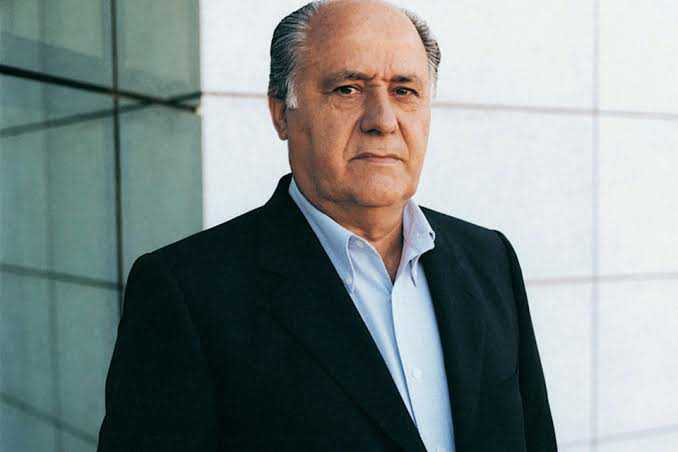
Source: HybeBeast
As the years went by, Zara began to make waves in the industry with its unique business model. While most retailers placed orders for clothing months in advance, Zara received new shipments twice a week, using customer feedback and data analytics to inform its designs and respond quickly to new trends in fashion. This approach won the brand a loyal following and a reputation for being at the forefront of fashion.
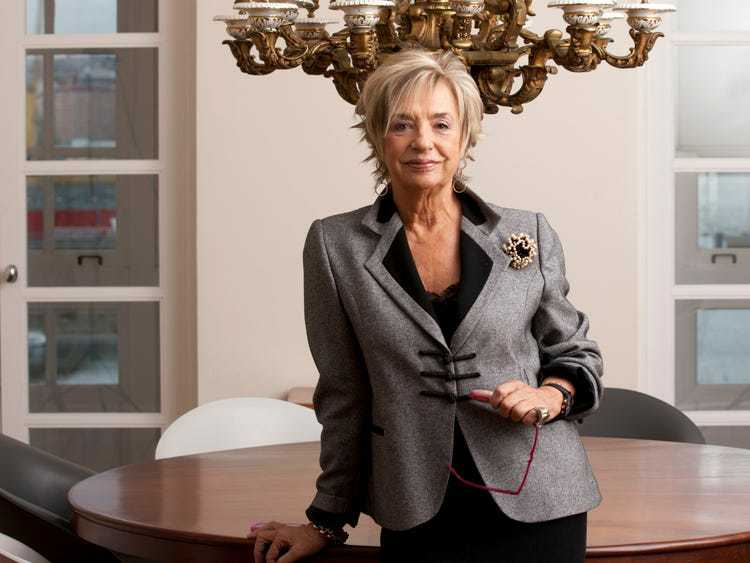
Source: Business Insider
The 1990s and 2000s saw Zara continue its upward trajectory, opening flagship stores in major fashion capitals across the globe, including Paris, London, and New York City. The company also expanded its product offerings by introducing accessories, footwear, and home goods to its product line. Throughout its journey, Zara has always embraced technology, utilizing data analytics and artificial intelligence to optimize its logistics management.
Today, Zara stands tall as one of the largest fashion retailers in the world, with over 3000 stores in 96 countries. Its innovative business model, trendy fashion clothing, and commitment to customer satisfaction have made it a household name and a symbol of fashion excellence. In recent years, Zara has also taken strides towards sustainability, demonstrating a commitment to preserving the planet for future generations.
As a subsidiary of Inditex group, one of the largest fashion groups in the world, Zara continues to leave a lasting impact on the fashion industry.
Target Audience
Zara appeals to the fashionable, trend-savvy person who embodies a sense of youth and a deep love of fashion. This group includes a wide range of men, women, and children who are all motivated to stay on trend and showcase their originality through their clothing choices. Zara targets the cosmopolitan, culturally aware consumer who isn't hesitant to invest in their particular style by emphasizing quality and design. /p>

Zara's Logo: The Crest of Catwalk Culture
The logo for Zara is a subdued depiction of understated beauty. Even though it's just a font, the message it conveys is powerful. The business name, etched in jet-black letters, emits a futuristic and minimalist attitude ahead of the always-evolving fashion trends.
Despite its seeming simplicity, Zara's brand strategy defies expectations and forges its own course. Unlike other fast-fashion brands, Zara wants to let its apparel speak for itself rather than overtly flaunt its branding. The business is sure that the quality of its apparel speaks for itself and does not require a logo to establish its authenticity.

Source: Logos-world
Instead of focusing on the logo, Zara invests in creating visually captivating clothing, with designs that are unparalleled and materials of the highest caliber. The brand's clothing is meant to be the centerpiece, commanding attention, and the absence of a logo only accentuates this concept.
Marketing Mix
Zara is a true trendsetter in the fashion industry, constantly pushing the boundaries with its stylish and on-point clothing collections. But behind the flawless must-have pieces, lies a carefully crafted marketing mix that has helped establish the brand as a leader in the fashion world. Let's explore Zara's Marketing mix to understand how Zara continues to captivate customers and define new benchmarks for the fashion world to follow. From product offerings and pricing strategies to promotion and place mix the ingredients that make Zara's marketing mix truly unforgettable.
Zara's product lineup is a tasteful synthesis of new trends, new styles practicality, and adaptability. The fashion brand offers a wide range of clothing and accessories to satisfy the various needs and preferences of its trendy customers.
The main component of Zara's product line is special women's clothes, which range from stylish gowns to casual tees and everything in between. The clothing brands menswear line, on the other hand, is a stylish combination of formal and casual apparel designed to meet the sartorial needs of the contemporary man.
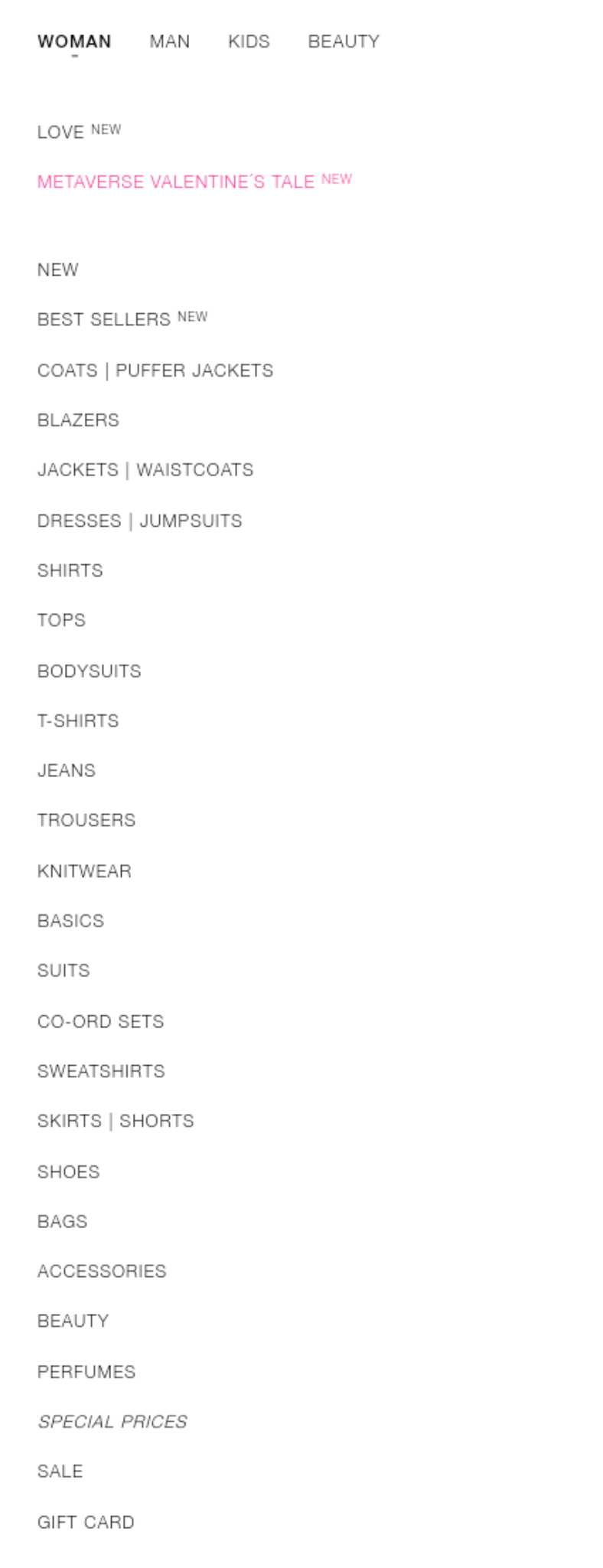
Source: Zara
Zara provides fashion items for even the youngest members of the family, ensuring that they can enjoy both comfort and style. Zara's children's clothing line is stylish and practical. And Zara offers a wide range of accessories, like handbags, shoes, and jewelry, to complete the look and give any outfit the perfect finishing touch.
Additionally, Zara's assortment of goods goes beyond just apparel and accessories. To give customers a full fashion experience from head to toe and even at home, the business's home collection includes a variety of furnishings, including bedding, towels, and décor items.
In 2021, Zara also introduced its first cosmetics line, Zara Beauty. The brand's beauty line offers a range of cosmetics and skincare products including lipsticks, eyeshadows, blushes, face masks, and fragrances.
Every year, Zara creates close to 450 million items based on the latest trends and fashion seasons. It takes 15 days to create new collections and get them into stores, capitalizing on market trends. If the item doesn't sell, Zara removes it from stores right away, halts production, and pursues a new design.
Basic clothing that lasts for years being a staple of wardrobes and fashion-forward clothing that only lasts three to four weeks are both major products of this fashion brand.
The price structure of Zara seamlessly blends value and affordable prices. From the company's extensive inventory of products at different price points, customers can select the appropriate zara clothes to fit their style and budget.
For added customer appeal, Zara employs several promotional price techniques like promotions and discounts. These methods offer buyers the possibility to get their preferred things for a significantly lesser cost.
Zara's pricing strategy, though, extends beyond straightforward sales and discounts. The company employs psychological pricing techniques including anchoring and odd pricing to influence customers' perceptions of value and boost sales.
Additionally, Zara's pricing strategy considers the regional economic conditions of its various locations, adjusting prices as necessary to maintain its products' accessibility and global competitiveness.
Zara's pricing strategy is an adaptable, comprehensive plan created to meet the needs of its customers and provide them with affordable access to high-end fashion items.
Zara's distribution strategy is a seamless fusion of brick-and-mortar retail store locations and online sales channels.
Zara Stores
Zara gives customers the chance to connect with its items in a remarkable physical setting thanks to its enormous retail presence in global markets that covers more than 3,000 locations across 96 countries.
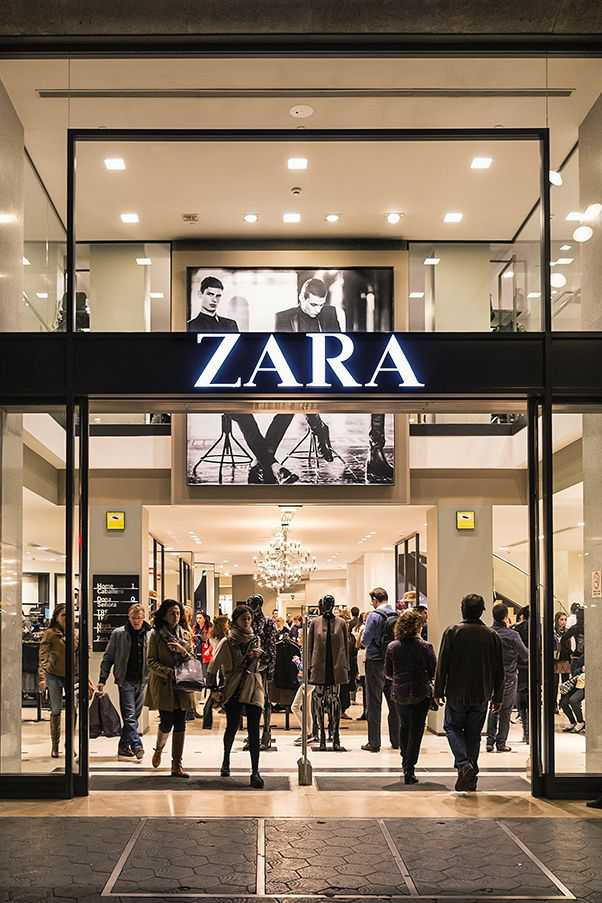
Source: Elle Australia
E-commerce platform
The Spanish fashion retailer, on the other hand, is aware that convenience is king and has enhanced its physical presence with a dynamic e-commerce platform, giving customers the option to purchase whenever they want from the comfort of their own homes. It first opened an online shop in Jordan in September 2010 before branching out internationally.
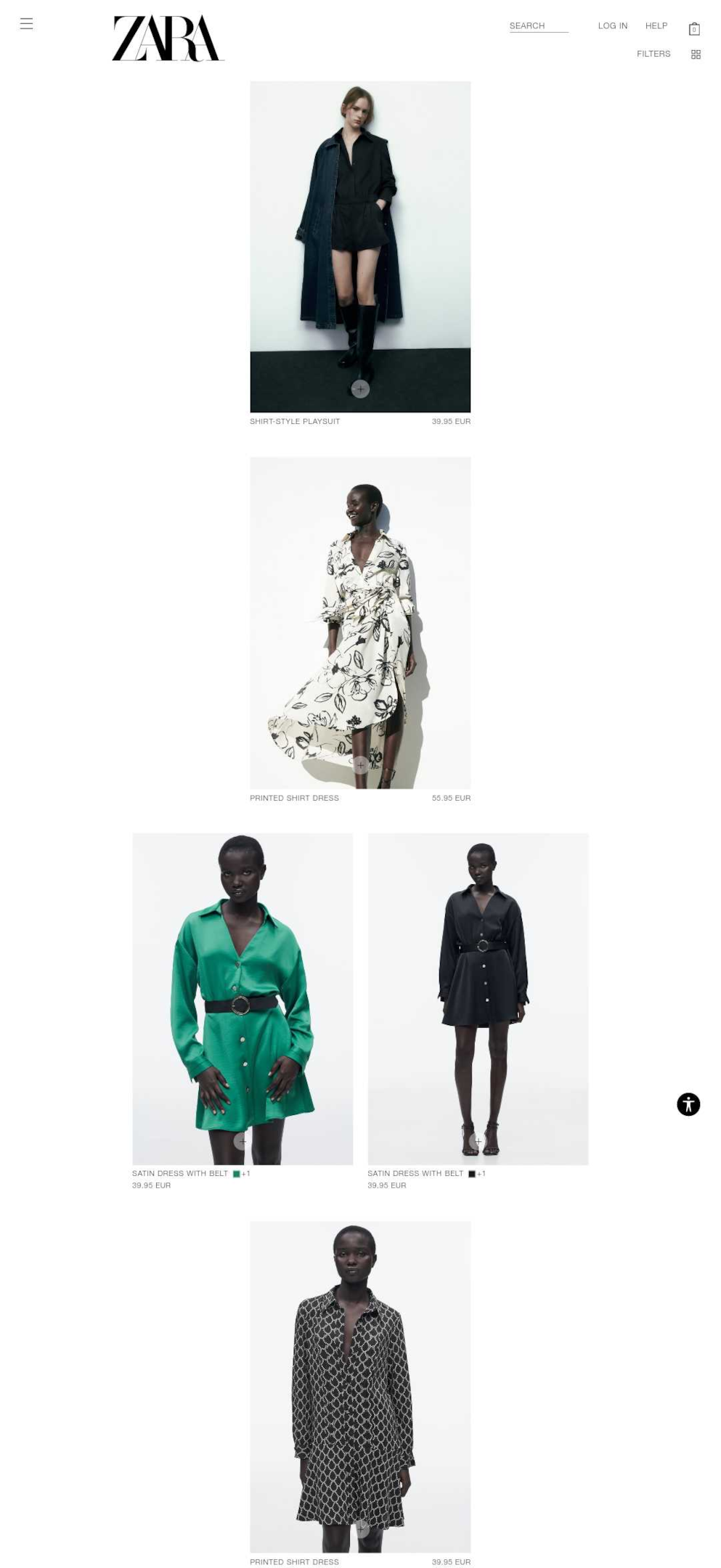
Supply Chain
Zara's distribution strategy is built around a flexible and efficient supply chain. To quickly and affordably meet customer expectations, the company works with various logistics firms in addition to its own distribution centers. Zara is able to respond quickly to the continuously evolving fashion environment and customer preferences because of this.
Customers can shop with ease from any corner of the world because of Zara's distribution strategy, which uses both physical and digital touchpoints. Whether customers want to purchase in-store or online, Zara promises them a simple and delightful experience.
Zara marches to the beat of its own drum when it comes to fashion marketing. While other fashion brands flood our screens with promotional marketing, Zara keeps things understated, allocating a mere 0.3% of its sales towards advertising strategy. Instead of relying on traditional promotional marketing methods like TV commercials, Zara places their faith in the power of their merchandise, store ambiance, and competitive pricing.

Source: Fashion Network
This unique approach allows Zara to remain laser-focused on delivering exceptional products, rather than overwhelming customers with a barrage of advertisements. And while you may not see Zara shouting from the rooftops about sales or promotions, rest assured that they are always curating a stylish and exciting shopping experience for their customers. Zara's main focus is opening new stores in new markets making clothing items available to everyone. This can be the main reason for Zara's success.
In-Store Magic
Shopping at Zara stores is like stepping into a fashion wonderland. From its prime urban locations to its carefully curated window displays, Zara knows how to captivate and charm its customers. With a keen eye for aesthetics, the company transforms its stores into artfully designed spaces that are impossible to resist.
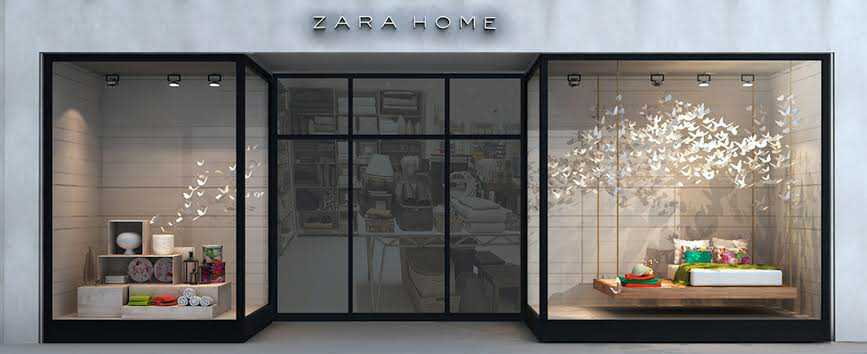
Source: Architizer
The window displays are the epitome of Zara's fast fashion philosophy, constantly evolving to showcase the latest and greatest in the world of fashion.
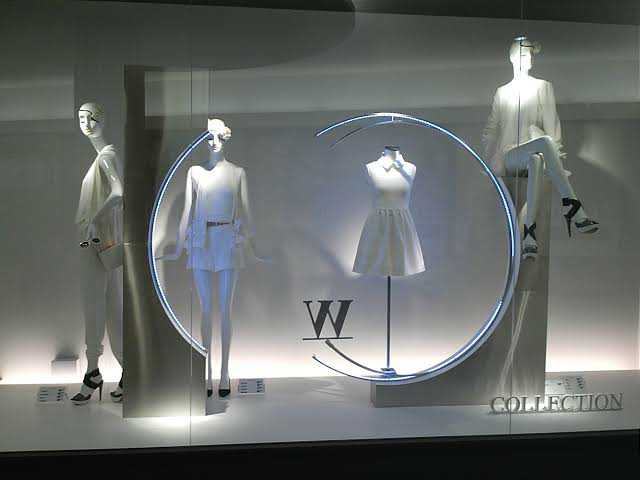
Source: Wordpress
And, the store managers and sales associates at every store locations are not only knowledgeable, but they also embody Zara's commitment to connecting with its customers by wearing uniforms specifically tailored to reflect the unique socio-economic trends of each location.
Each visit to a Zara store is a treat for the senses. Every detail is meticulously planned to offer a truly immersive fashion experience, making it impossible for you to leave without feeling inspired and fashion-forward.
Sales Promotions
Zara is known for its strategic and frequent sales promotions to drive traffic to its stores and online platform. The company frequently offers discounts on select items, ranging from seasonal promotions to clearance sales. These promotions are often time-limited and rotate frequently to keep customers engaged and interested.
In addition to in-store and online sales, Zara also offers a loyalty program for its most frequent shoppers, providing special discounts and perks for members.
Public relations and Influencer Marketing
Zara places a significant emphasis on PR, using various tactics and strategies to communicate its brand identity and message to the public.
Some of Zara's PR initiatives include engaging with fashion influencers, hosting high-profile events, and collaborating with other brands and designers.
Direct Marketing
Zara utilizes various direct marketing tactics to reach its target audiences, such as email marketing, personalized promotions, SMS marketing, in-store events, and print advertising. These efforts help Zara connect with customers in a personal and relevant manner.

Source: MailCharts
Store managers at Zara also contribute significantly to marketing the business and its products by giving customers individualized attention and offering product recommendations.
Zara places high importance on brand communication through online communities, despite limited spending on traditional advertising, unlike other brands.
Social Media
Given that social media is the lifeblood of the younger generation, Zara uses well-known platforms like Facebook, Instagram, and Twitter, YouTube, TikTok to promote its new collections, partnerships, promotional offers, and events. Zara's Instagram boasts a following of 56.1 Million while its Facebook page boasts a following of 30M. Zara's social media presence generates the vast majority of its value organically. Zara's YouTube showcases the launch of new campaigns.
From Trendsetting to Trailblazing Marketing: Zara's Secret Sauce
Thanks to its creative marketing strategies that prioritize the needs of the customer, the fast fashion brand Zara has soared to new heights in the fashion sector. Here are some important fashion marketing strategies that set the fast fashion brand Zara apart from most brands.
Fast fashion phenomena
Zara excels at fast fashion, swiftly and skillfully adapting to the most new trends and customer preferences. Zara dominates the opposition and holds a commanding lead thanks to its exceptional agility curve.
Vertical Integration
Unlike many retailers, Zara has a vertically integrated supply chain, allowing it to control all aspects of its business, from design and production to distribution and sales. Zara is able to keep costs low while maintaining high product quality as a result of this.
The design and product development team, a highly talented and creative group of individuals tasked with bringing the latest fashion trends and styles to life, is at the core of Zara's supply chain. They accomplish this by leveraging a wealth of data and customer insights to ensure that each product offering reflects the current fashion landscape and customer preferences.
Once the designs are completed, Zara begins the process of obtaining the necessary supplies from a large network of dependable manufacturers. Every aspect of the company's operations reflects its high standards, and it collaborates closely with its suppliers to ensure that the quality of its products is unrivaled.
Production takes place in Portugal, Spain, and other countries as a result of collaborations with independent producers. Zara uses a just-in-time production technique to reduce waste and allow for quick changes in response to demand changes.
The main part of Zara's distribution network is a centralized distribution center located in Spain, which serves as the hub for its global logistics. From this central location, Zara is able to quickly and efficiently distribute its products to its retail stores and e-commerce platform, ensuring that customers around the world have access to the latest fashion offerings.
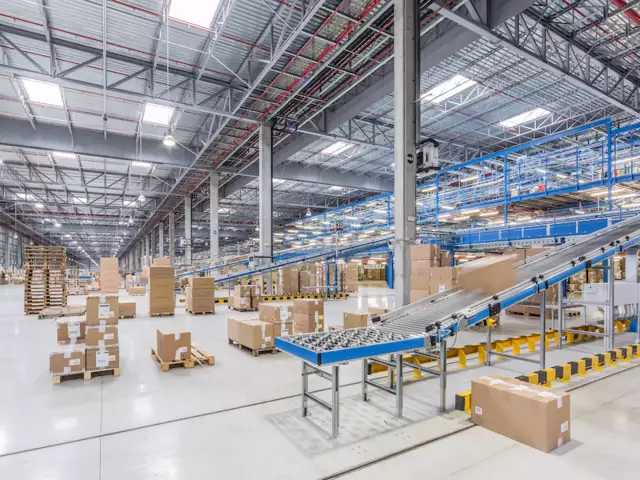
Customer Experience
Zara has earned a reputation for providing a superior brand experience that puts its consumers' needs and wants first. The company's dedication to this experience is visible in every facet of its operations, from the clean, contemporary aesthetic of its retail spaces to the thoughtfully chosen assortment of in-vogue clothing.
Zara, a pioneer in technical advancement, ensures a seamless and convenient shopping experience by integrating digital displays and mobile payment options into the in-store experience. Due to the business's robust online presence and user-friendly website and mobile app, customers can readily access its products from the comfort of their homes.
But Zara's commitment to providing a good customer experience goes far beyond the boundaries of traditional and online shopping. The company has a keen awareness of the needs of the modern customer and takes consumer feedback seriously.
A story that exemplifies this was when requests for a pink scarf started pouring in from various cities like Tokyo, Toronto, San Francisco, and Frankfurt. The customer's voice was heard loud and clear, and within a mere seven days, Zara had created a pink scarf that was not only aesthetically pleasing but also in high demand.
With 500,000 pink scarves selling out in just three days, it's clear that Zara's swift action and ability to turn customer insights into tangible products is what sets them apart. By having a direct link to their production process, Zara is able to be nimble, meeting customer needs with lightning speed and remarkable efficiency.
By constantly updating their style to fit a new trend, Zara empowers its customers and strengthens brand loyalty, with store managers who try to understand the customer's mind through their behavior and feedback at the forefront. Feedback from even one zara customer makes a big difference.
Sustainable Sensibility
Zara is not just a global fashion powerhouse, but also a responsible one. The business is dedicated to sustainability and often highlights its eco-friendly initiatives in its marketing campaigns, positioning it as a leader in the sustainable fashion movement. Zara is committed to reducing waste and promoting environmental friendliness, using eco-friendly materials, and implementing programs like "Closing the Loop" to minimize waste.
The brand also partners with NGOs and works towards a future free of toxic chemicals through initiatives aimed at reducing hazardous substances in production processes. With its focus on a greener future, Zara firmly establishes itself as a responsible and sustainable fashion leader.
In 2019, the brand launched its "Join Life" collection, which received widespread media attention and emphasized Zara's dedication to sustainability. Its LEAF COALITION initiative brings together companies and governments to protect tropical forests and promote sustainable growth, with the goal of ending deforestation.
Zara has set ambitious sustainability goals for future to drive change in the textile industry, working with the scientific community, social and environmental organizations, and other companies in the sector. The brand is also committed to eliminating single-use plastics for customers and using recycled or reused waste in its operations. Zara aims to have zero net emissions by 2040, solidifying its position as a responsible and innovative fast fashion leader.
Collaborative Couture
Zara is always searching for novel ways to engage and enthral its customers. The brand's various partnerships with designers and artists to create limited edition collections and exclusive products that light up the fashion industry provide customers with a shopping experience that is nothing short of spectacular. It has a reputation for working with brands like Nike, Kaia, and most recently, Clarks.
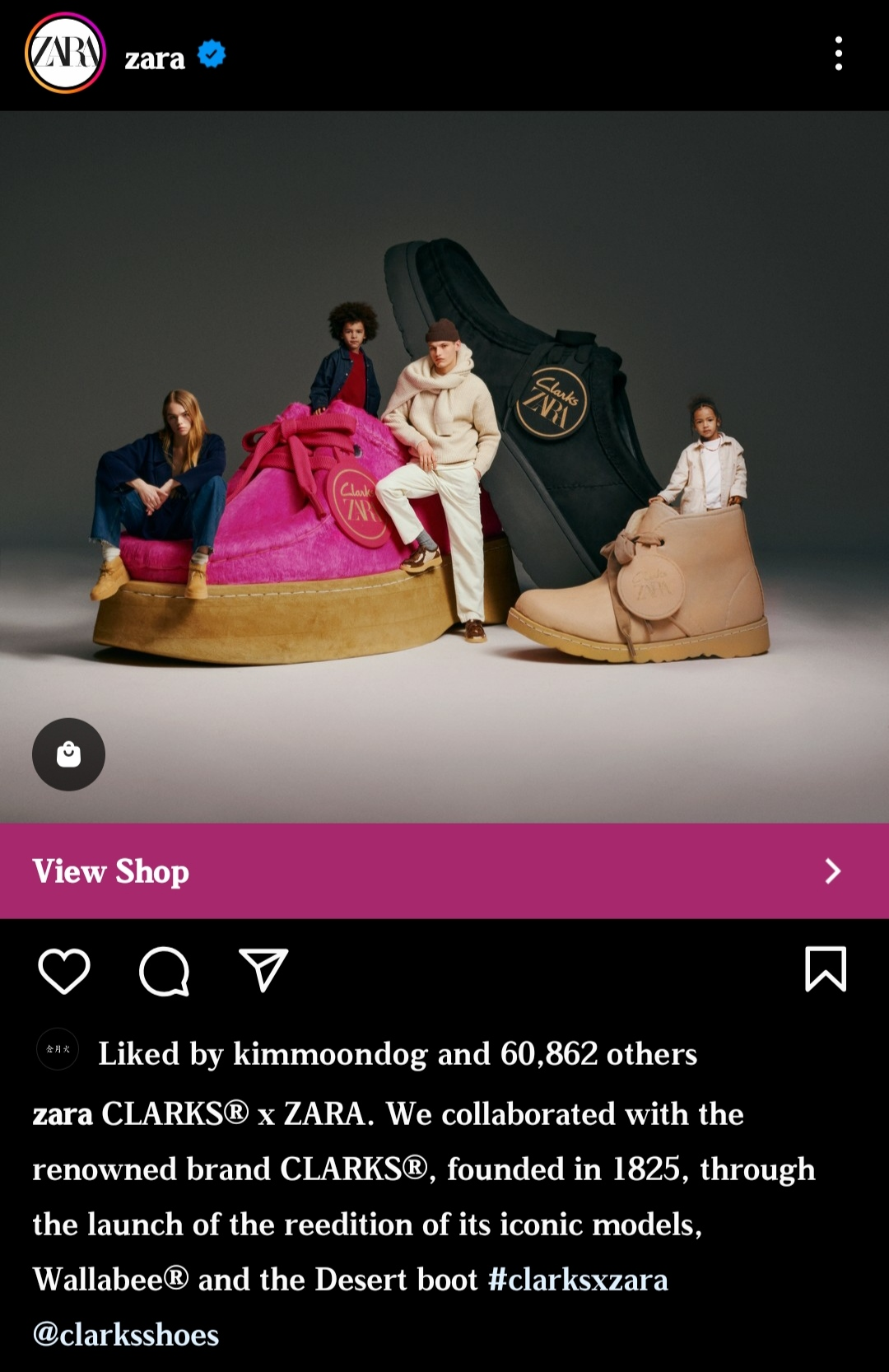
Source: Zara's Instagram
Zara's marketing methods, which are a symphony of innovation and customer focus, boost the brand above the competition. Additionally, they give customers a truly remarkable experience.

Smart Marketing Tips for Startup Success: The Zara Way
The ability of Zara to quickly identify and react to fashion trends is partly responsible for its outstanding performance in the fashion business. This makes it possible for the company to continually provide the latest styles to the market, retaining clients' interest.
Quality Matters
Despite focusing on fast fashion, Zara encourages quality in its products, setting it apart from its competitors and fostering brand loyalty. The commitment to quality made by the business helps to build customer loyalty.
Technology-Driven
Zara uses technology to streamline its logistics and accelerate the launch of new items. Additionally, the company uses social media and digital marketing to connect with customers and provide a seamless purchasing experience.
Stunning Store Design
Zara stores are made to be aesthetically pleasing and memorable, building a strong brand image and giving customers a unique shopping experience. The brand's stores are thoughtfully chosen to reflect the brand's mission and core principles, thus enhancing the brand's reputation.

Personalized Shopping
Through its app, Zara brand provides users a customized shopping experience that enables them to establish profiles and receive recommendations based on their preferences. This personalization fosters a strong bond between the company and its clients, giving them a feeling of exclusivity and individualized care. Explore customer experience analytics to learn how to assess customer experience when developing strategy.
Strong Brand Image
The cornerstone of Zara's marketing plan is creating a strong, recognizable brand image that resonates with its target demographic. The company's carefully chosen visual content and consistent message across all media have helped it establish a distinctive and recognizable brand identity.
In the world of instant fashion, the Zara brand stands alone as a brilliant illustration of marketing brilliance. Through a marketing strategy that combines fast fashion, designer collaborations, and cutting-edge technology, Zara has developed a brand image that is both stylish and socially conscious. Due to their environmentally friendly activities and aesthetically pleasing store designs, Zara consistently captivates people and outperforms competitors.
To sum up, Zara's marketing strategy is a symphony of style, content, and sustainability that has elevated the brand as one of the successful fashion retail brands in the fashion industry and solidified its status as a true marketing prodigy.
Intrigued by Zara's success? Learn more about the fast fashion market by taking a closer look at Fashion Nova's marketing strategy. Discover how this business leveraged influencer marketing and TikTok to rise to the top.
You can also read marketing strategy case studies on Myntra and Nykaa for an online-first approach in fashion eCommerce industry.
- popover#mouseOver mouseout->popover#mouseOut" data-popover-translate-x="-25%" , data-popover-translate-y="-220%"> Copy link
- bottom-bar#toggleTagsSection"> popover#mouseOver mouseout->popover#mouseOut" data-popover-translate-x="-25%" , data-popover-translate-y="-220%"> Copy Link
- bottom-bar#toggleTagsSection">

You'll love these articles too!

Co-founder & CEO at Flexiple ($3mn+ revenue, bootstrapped) & buildd.co | Helping Startup...
Monster Energy Marketing Strategy: How Monster become a market leader by 'Unleashing the Beast'?
Learn about Monster's iconic marketing strategy and advertising campaigns. Read how Monster aces the 4Ps of marketing mix - Product, Price, Promotion & Placement.

Co-founder at Flexiple, buildd & Remote Tools ($3 million revenue, bootstrapped)
Breaking Down The Maruti Suzuki Marketing Strategy: How they became a brand that rules India's automobile market
Learn about Maruti Suzuki's iconic marketing strategy and advertising campaigns. Read how Maruti Suzuki's aces the 4Ps of marketing mix - Product, Price, Promotion & Placement.

Clinical Research | Data Analytics

Partner at Deloitte | Banking & Capital Markets | Cloud Strategy | FinOps Offering Leader | Board...

Swiggy Business Model: How the Company is Building a Brand That's Hard to Resist
Explore the innovative business strategies behind Swiggy's success, including the company's approach to building a strong brand and delivering unbeatable customer experiences. Learn how Swiggy is disrupting the food delivery industry and solidifying its place as a leader in the market.

Zara Case Study: How Zara Lead The Fast Fashion Market?
Supti Nandi
Updated on: April 8, 2024
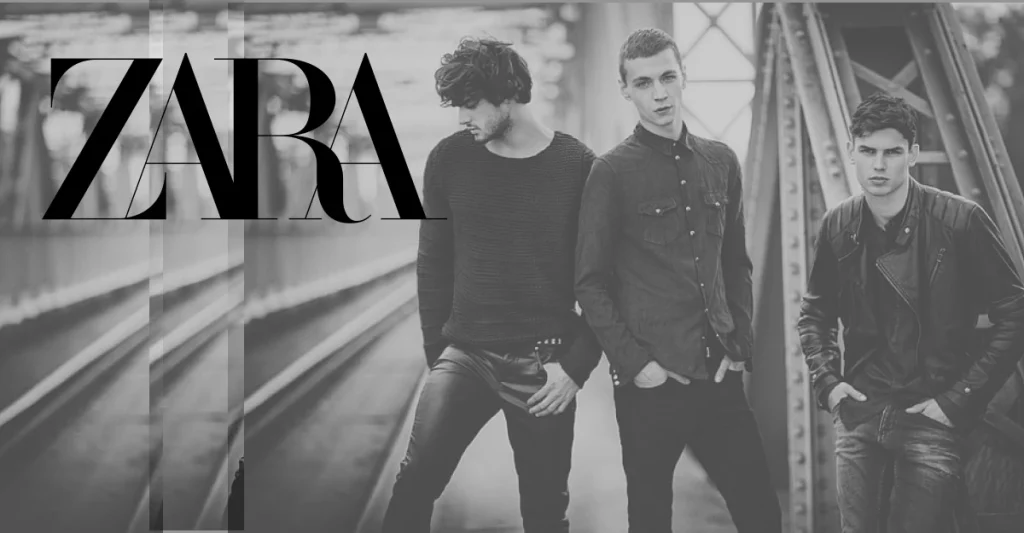
You asked, and we listened! Get ready to dive into the fascinating world of Zara with our highly requested Zara Case Study.
Recently, Zara has been trending in Instagram reels and YouTube shorts for its funky model poses. You must have seen it too! Have you wondered what made this Spanish brand so famous?
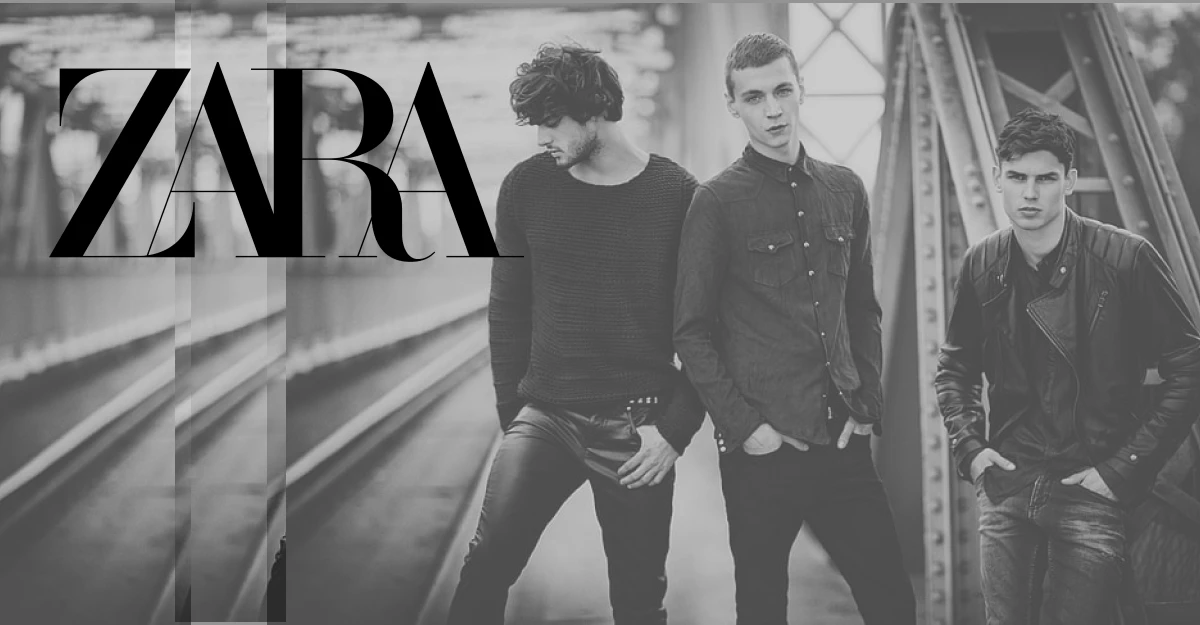
You may say that Zara works on the concept of fast fashion, which makes it win in the competitive market.
Well, that’s true but it is not the only reason. Let’s uncover the secrets behind Zara’s success through the Zara Case Study.
Let’s begin!
(A) Zara: A Brief Overview
Zara, a notable name in the fashion industry, is a Spanish retailer known for its distinctive approach to clothing and accessories. Operating on a fast fashion model, Zara excels in swiftly adapting to evolving fashion trends, setting it apart in the market. With a vertically integrated process, the brand manages everything from design to production in-house, allowing for efficient and responsive operations.
You’ll find Zara stores globally, each offering a diverse range of trendy and affordable clothing for men, women, and children. The brand’s commitment to delivering fashion-forward pieces at accessible prices caters to a broad audience, reflecting its significance in the industry.
Do you know what is fast fashion?
Fast fashion is a business model characterized by quickly producing affordable, trendy clothing items to meet rapidly changing consumer demands.
Zara works in the same way. We will look into its details in the upcoming section. Before that, let’s go through the profile of Zara-
| Zorba | |
| Retail | |
| 1975 | |
| Amancio Ortega, Rosalia Mera | |
| Arteixo (Galicia, Spain) | |
| 2,007 | |
| Worldwide | |
| Clothing | |
| €23.9 billion | |
| Inditex | |
| Forever 21, Mango, Gap, Marks & spencer |
What makes Zara stand out is its ability to balance responsiveness in manufacturing, a well-structured supply chain, and a keen understanding of consumer preferences. This combination has established Zara as a trendsetting and influential player in the fashion landscape. Its adaptability and dedication to making fashion trends accessible have solidified Zara’s place as a recognizable and influential name in the fashion industry.
(B) Zara Case Study: History & Evolution
Zara’s journey began with a dress-making factory called Inditex, established by Ortega in 1963. Over the years, Zara expanded its presence from Spain to Portugal and eventually to other European countries, the United States, and France.
Today, Zara boasts nearly 6,500 stores across 88 countries worldwide.
Let’s dive into the history of Zara in detail-
| Zara was founded by Amancio Ortega in A Coruña, Spain, initially named ‘Zorba’ but later changed to ‘Zara’ due to a nearby bar with a similar name. | |
| Ortega transforms Zara’s design, manufacturing, and distribution process, emphasizing “instant fashions” using information technology and collaborative design groups. | |
| Zara opens its first international store in Porto, Portugal. | |
| Expansion into the United States, followed by entry into France in 1990. | |
| Further expansion to Mexico (1992), Greece, Belgium, Sweden (1993), and Israel (1997). | |
| Zara expands globally, entering Brazil (2000), Japan, Singapore (2002), Ireland, Venezuela, Russia, Malaysia (2003), China, Morocco, Estonia, Hungary, Romania (2004), Philippines, Costa Rica, Indonesia (2005), South Korea (2008), India (2010), Taiwan, South Africa, Australia (2011), and Peru (2012). | |
| Zara launched its online boutique, initially in Jordan. | |
| Zara Online extends services to Austria, Ireland, Netherlands, Belgium, and Luxembourg. | |
| Online stores commence operations in the United States. | |
| Zara introduces RFID technology in stores, using chips in security tags for inventory management. | |
| Zara ranks #30 on Interbrand’s list of best global brands. | |
| Zara updated its logo, designed by the French agency Baron & Baron. Despite a global decline in textile commerce, Zara’s business has risen by 2.17%. CEO Persson mentions plans to cut retail locations in Europe due to global rent considerations. | |
| Zara exits Russia, selling its business and rebranding to Maag. | |
| Zara operates nearly 3000 stores in over 96 countries, including kids and home stores, continuing its global expansion. |
Zara is the flagship brand of the Inditex group, which is one of the world’s largest fashion retail conglomerates.
The head office of Zara is located in Arteixo, in the province of A Coruña, Galicia, Spain. Inditex also owns other popular brands like Massimo Dutti, Pull&Bear, Bershka, and Stradivarius.
(C) Brand Philosophy of Zara
Do you know why Zara stands out among its competitors? Due to its brand philosophy! Sara’s success hinges on several key principles-
| It keeps up with the latest trends, ensuring that its collections are always fresh and relevant. | |
| Despite being affordable, Zara maintains high-quality standards in its clothing and accessories. | |
| Zara strikes a balance between style and price, making it accessible to a wide range of consumers. | |
| Leveraging primary information technology, Zara swiftly replicates fashion trends. | |
| Teams of designers collaborate on products, enhancing productivity. | |
| Zara uses affordable materials without compromising quality. | |
| Outsourcing production to countries with cost-effective labor. |
Zara’s strategy is strikingly different from traditional fashion retailers. Reason? Fast fashion concept and in-house production of clothes! Go through the next section for detailed information.
(D) Zara Business Model: Effective Working Strategies
In this section, we will dive into the business model of Zara to determine its working strategies that played a huge role in its success-
| At the core of Zara’s business model is its commitment to fast fashion. Unlike traditional retailers, Zara rapidly responds to the latest trends, ensuring that new designs hit the shelves at record speed. This approach allows you, the customer, to access the most current styles without the typical delays in the fashion industry. | |
| Zara takes control of every step in the production process, from design to manufacturing and distribution. By keeping everything in-house, Zara maintains a high level of flexibility, enabling quick adjustments based on customer feedback and emerging trends. This vertical integration contributes to the brand’s agility in the ever-evolving fashion landscape. | |
| Zara deliberately produces limited quantities of each design. This intentional scarcity creates a sense of exclusivity, driving demand. As a result, you encounter a frequently changing inventory, enhancing the allure of finding unique and in-demand pieces during every visit. | |
| The “just-in-time” manufacturing approach ensures that Zara produces items only when there’s demand. This minimizes excess inventory and reduces the need for heavy markdowns, allowing you to enjoy reasonable pricing for trendy fashion items. | |
| Zara leverages data and customer feedback to inform its design and production decisions. By closely monitoring what resonates with you, the brand tailors its offerings to match your preferences, creating a more personalized and customer-centric shopping experience. | |
| Zara synchronizes its operations globally, ensuring that the latest trends reach stores worldwide simultaneously. This synchronized approach reinforces the brand’s image of offering cutting-edge fashion on a global scale, catering to diverse customer tastes and preferences. |
Let’s dive into the details-
(D.1) Fast Fashion Model
Zara is known for its “ Fast Fashion ” approach. It releases new collections frequently, sometimes launching over 22 new product lines per year. This agility allows Zara to respond swiftly to changing trends and customer preferences.
- Rapid Trend Replication: Harnessing cutting-edge information technology, Zara excels at swiftly replicating prevailing fashion trends. This enables the brand to stay ahead of the curve, delivering the latest styles to customers promptly.
- Group Design Approach: Departing from the conventional individual designer model, Zara adopts a collaborative approach. Teams of designers work in synergy, fostering enhanced creativity and efficiency in product development. This collective effort ensures a diverse range of products aligned with dynamic market demands.
- Cost-Effective Materials: Zara strategically utilizes affordable materials without compromising on quality. This approach allows the brand to maintain competitive pricing while delivering products that meet or exceed industry standards. The focus on cost-effective yet quality materials contributes to Zara’s accessibility and broad customer appeal.
- Competitive Pricing: Zara optimizes its production costs by outsourcing to countries with cost-effective labor. This global approach not only supports competitive pricing but also facilitates the brand’s ability to swiftly adapt to market demands. The combination of efficient production and competitive pricing reinforces Zara’s position as a leader in the fast fashion landscape.
(D.2) Product Range
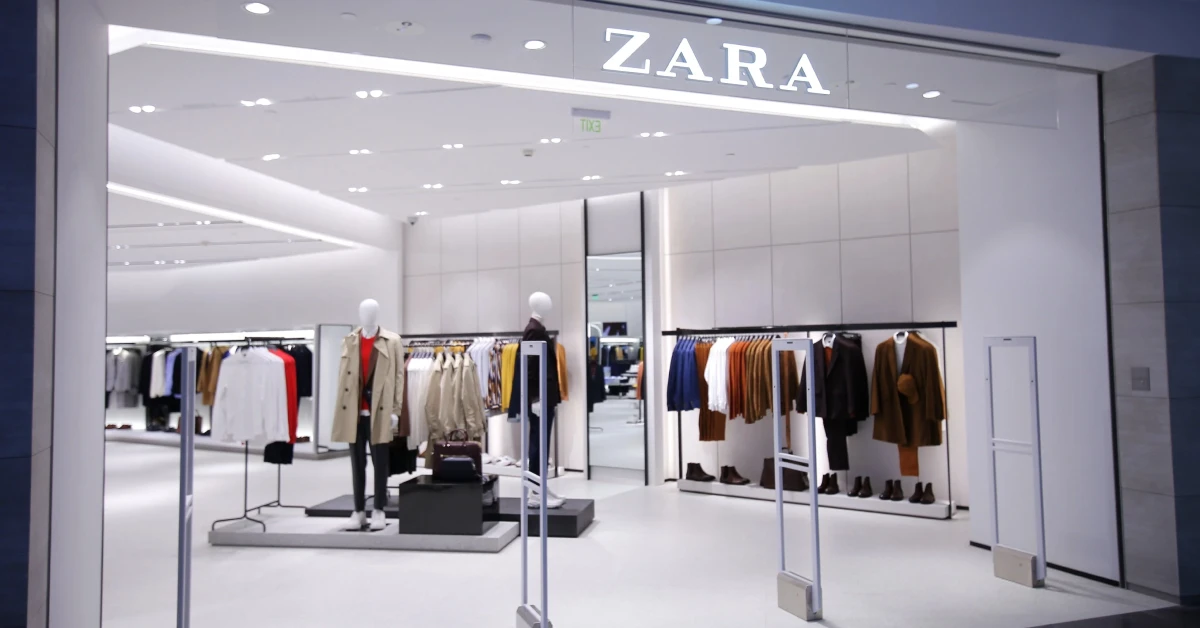
Let’s briefly look at its product range too-
- Clothing: From chic dresses and tailored suits to casual wear and activewear.
- Accessories: Including bags, shoes, belts, and jewelry.
- Beauty Products: Fragrances and cosmetics.
- Perfumes: Zara has its line of fragrances.
(D.3) Vertical Integration: In-House Operations & Logistics
Zara’s way of doing business centers on something called vertical integration. Here is how it works-
- Design: Zara takes charge of creating its designs, meaning it controls how its clothes look and stay on-trend. This ensures that what you find in Zara stores reflects the latest fashion trends.
- Manufacturing: Zara doesn’t just design; it also makes its clothes in-house. This is a big deal because it lets Zara make changes to its products fast. If there’s a new trend or customer feedback, Zara can respond quickly, which is pretty cool.
- Shipping and Distribution: Zara doesn’t stop at making the clothes; it handles everything from getting them to the store to making sure they’re sent to the right places. This full control of the supply chain ensures that the clothes you see in Zara are not only stylish but also reach the stores efficiently.
In short, the fast fashion concept, vertical integration, and supply chain efficiency helped Zara to achieve impressive milestones.
(E) Revenue Model of Zara: How does Zara make money?
Do you know Zara earned Rs.2,562.50 crore in India? That’s not all. It earned over 23 billion euros from its stores worldwide.
That’s quite amazing! Isn’t it?
But how does Zara earn such a whopping amount of money? Due to its impressive revenue model.
Let’s go through them one by one-
| Zara rakes in a substantial portion of its revenue through the operation of a whopping 2,007 stores spread across 96 countries. This massive retail network allows customers worldwide to access and purchase Zara’s trendy offerings. | |
| Zara doesn’t limit itself to physical stores. The brand has a robust online presence, catering to a global audience through its e-commerce platform. This avenue expands Zara’s reach, enabling customers to shop conveniently from anywhere | |
| Zara is under the ownership of Inditex, the world’s largest fast-fashion group. This means that Zara is part of a significant player in the global fashion industry, benefiting from shared resources and expertise within the Inditex umbrella. | |
| In 2020, Inditex, Zara’s parent company, held a market capitalization of an impressive $73.7 billion. This substantial valuation highlights Inditex’s influential position in the market. | |
| As of 2022, Zara’s value soared to nearly $13 billion. This showcases the brand’s standalone worth within the larger Inditex portfolio, emphasizing its contribution to the group’s overall success. |
Let’s briefly dive into Zara’s finances for the years 2022 & 2021-
| 23.9 | 19.7 | |
| 4.0 | 2.8 | |
| 31 | 25 | |
| 24.8 | 23.6 | |
| 2,312 | 2,489 | |
| 13 | 12 |
That’s how Zara is going through its purple patch in terms of revenues!
(F) Zara Marketing Strategies
Zara, the renowned Spanish fashion retailer, has crafted a distinctive marketing strategy that contributes to its global success. In this section, we will delve into the key elements of Zara’s marketing approach-
(F.1) Fast Fashion Strategy
The fast fashion model functions as a highly effective marketing strategy for Zara in several ways. First and foremost, the rapid turnover of collections, with over twenty product lines per year, creates a sense of urgency and novelty for customers. This continual introduction of fresh styles not only keeps Zara top-of-mind but also fosters a dynamic shopping experience, encouraging frequent visits to discover the latest trends.
Moreover, the quick response to changing trends and customer preferences positions Zara as a trendsetter, appealing to fashion-conscious consumers. The ability to swiftly translate runway trends into accessible and affordable pieces reinforces Zara’s image as a go-to destination for staying in vogue.
Additionally, the limited production batches contribute to an atmosphere of exclusivity, prompting customers to make timely purchases to secure unique and in-demand items. This scarcity-driven approach enhances the perceived value of Zara’s offerings.
In essence, the fast fashion model serves as a powerful marketing tool for Zara by creating a sense of immediacy, exclusivity, and trend relevance, fostering customer loyalty and consistently attracting a diverse audience seeking the latest in fashion.
(F.2) In-Store Experience
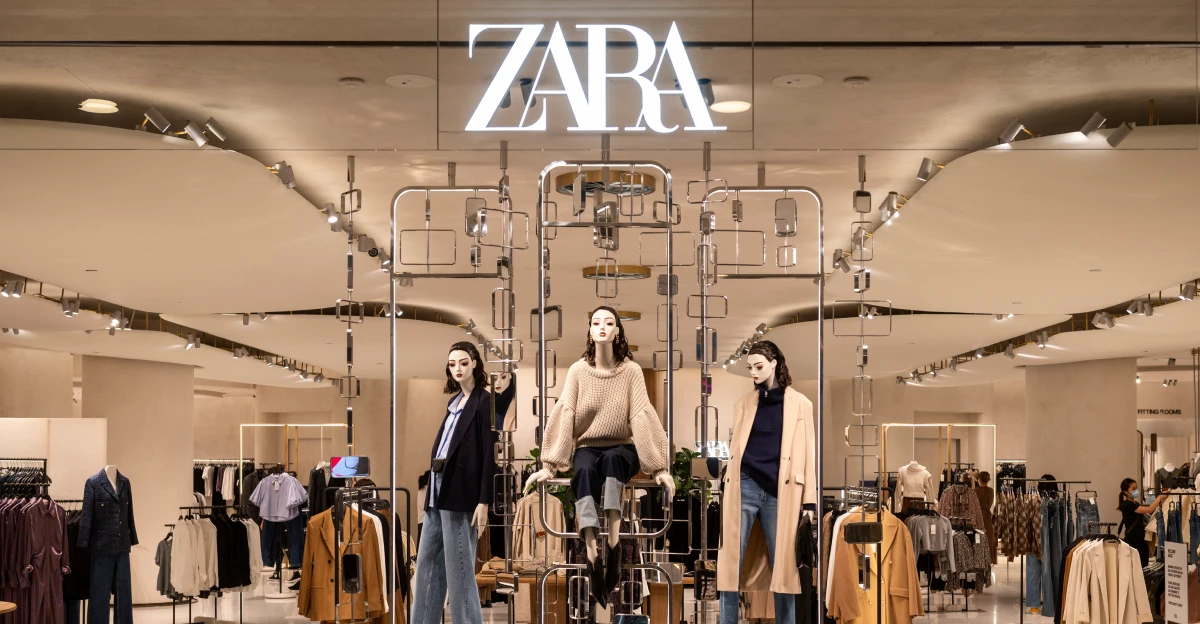
Zara places a strong emphasis on crafting an exceptional in-store experience, carefully curating showrooms to exude an atmosphere that is both exclusive and professional. The meticulous design choices contribute to an ambiance that goes beyond a mere shopping space, creating an environment where customers feel engaged and inspired.
The meticulous attention to detail is aimed at ensuring that every aspect of the in-store setting is carefully considered, from layout to lighting.
This focus on the in-store ambiance goes beyond aesthetics—it becomes a vital part of Zara’s marketing strategy. The thoughtfully designed physical stores act as powerful marketing tools in themselves, drawing in customers by providing a memorable and immersive shopping environment.
By enticing shoppers to explore the latest trends in this carefully curated setting, Zara not only enhances the overall customer experience but also reinforces its brand image as a trendsetting and sophisticated fashion destination!
(F.3) Affordability & Differentiation
Zara strategically positions itself by prioritizing affordable pricing while maintaining a commitment to quality. This dual emphasis allows the brand to resonate with a wide range of customers. By providing stylish clothing at reasonable prices, Zara ensures accessibility, making fashion-forward designs attainable for a diverse audience.
The effectiveness of this marketing strategy lies in Zara’s ability to differentiate itself in the market. The brand stands out not only for its trendsetting designs but also for its adept balance of fashion-forward aesthetics and accessible costs.
This unique blend positions Zara as a go-to destination for those seeking both style and value, enhancing the brand’s appeal and solidifying its market presence. The affordability and differentiation strategy contribute to Zara’s ability to capture a broad customer base and maintain its status as a leading player in the competitive fashion landscape.
(F.4) Word of Mouth and Limited Advertising
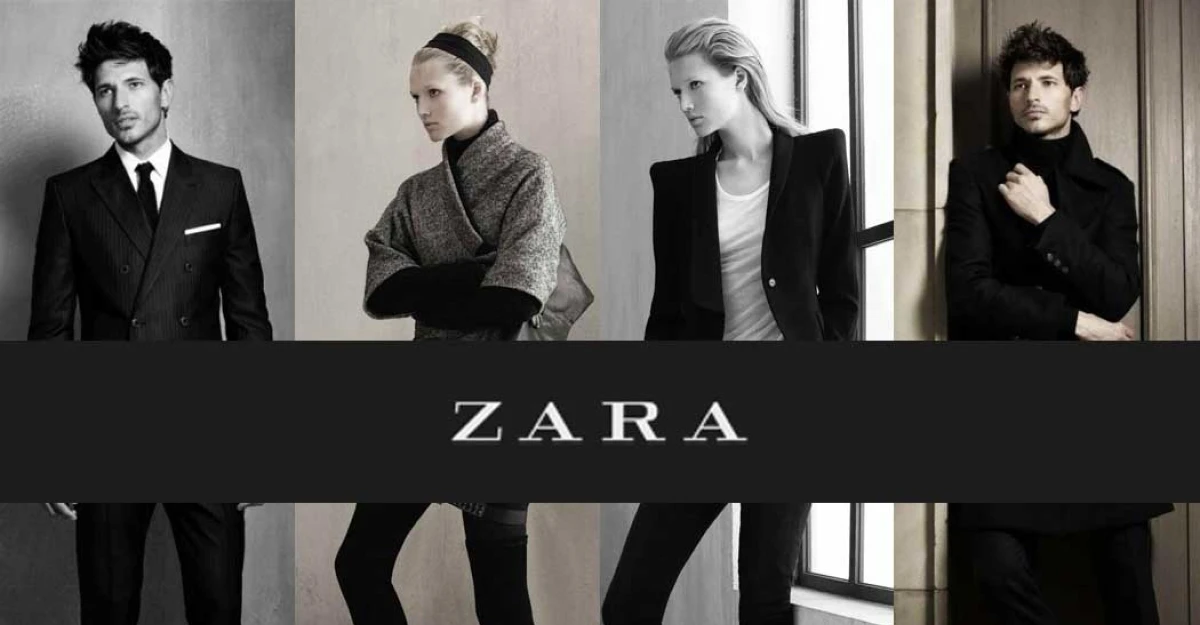
Zara strategically leverages the power of word of mouth and customer recommendations as primary drivers of its marketing efforts. In a departure from traditional advertising-heavy approaches, Zara relies on the subtlety of customer satisfaction and positive experiences to promote its brand.
This unique strategy involves cultivating a strong and positive buzz around Zara’s collections, encouraging customers to share their experiences and recommendations. The reliance on word of mouth creates an authentic and organic promotion of the brand, fostering a sense of trust and credibility among potential customers.
The limited advertising approach doesn’t diminish Zara’s impact; rather, it aligns with the brand’s commitment to providing an outstanding in-store experience and quality products. The positive buzz generated by satisfied customers becomes a powerful force, driving foot traffic to Zara’s stores and contributing to the brand’s sustained success in the competitive fashion market.
(F.5) Social Media Marketing
Zara actively embraces social media platforms as a crucial component of its marketing strategy. The brand leverages platforms like Instagram, Facebook, and Twitter to engage directly with its audience, creating a dynamic online presence.
The strategy involves regular updates across these platforms, keeping followers informed about the latest arrivals, ongoing trends, and behind-the-scenes glimpses into Zara’s fashion world. By maintaining an active and visually appealing presence, Zara not only stays connected with its audience but also cultivates a sense of anticipation and excitement around its offerings.
In addition to direct engagement, Zara strategically collaborates with influencers. These collaborations amplify Zara’s reach, tapping into the influencers’ follower base and creating a ripple effect of brand awareness.
Through this multi-faceted approach, Zara effectively utilizes social media not just as a promotional tool but as a means to foster a dynamic and interactive relationship with its audience, contributing to the brand’s overall success in the digital landscape.
(F.6) Personalization & Community Engagement
Zara adopts a customer-centric strategy by customizing its offerings to cater to local tastes and preferences. This personalization ensures that Zara’s collections resonate with diverse communities, creating a more inclusive and relatable shopping experience.
Community engagement takes center stage in Zara’s approach. Events like fashion shows or store openings play a pivotal role in fostering a sense of belonging among customers. By actively involving the community in these events, Zara goes beyond being a retailer and becomes an integral part of the local fabric.
Crucially, Zara prioritizes customer feedback. Actively listening to what customers have to say, the brand adapts and evolves its offerings based on this valuable input. This responsiveness not only enhances the overall customer experience but also reinforces a sense of collaboration between Zara and its community.
In essence, Zara’s commitment to personalization and community engagement contributes to a brand image rooted in customer satisfaction and a genuine connection with the diverse communities it serves.
(G) Sustainability Efforts: Crucial Part of Zara Case Study
Do you know what Zara is famous for apart from fashion? Its sustainability efforts to preserve mother nature! Let’s look at the sustainability efforts of Zara-
| Launched the Join Life movement to enhance sustainability. | ||
| Set goals for 2030, focusing on areas like water conservation and reducing waste in landfills | ||
| Actively working to ban harmful chemicals* from production processes. | ||
| Transparency score of 14%. | ||
| Parent company Inditex shares supply chain traceability reports and conducts safety audits. | ||
| Zara-specific details are often linked to Inditex, making it challenging to find specific information. Factory lists and audit results are not publicly available. | ||
| 15/33 | ||
| While progress has been made in improving working conditions, the size and profitability of Zara should allow for better results. | ||
| Enforces a solid code of conduct and conducts audits to ensure compliance. | ||
| Scores below 50% for environmental sustainability. | ||
| It includes achieving net-zero emissions by 2040, adopting sustainable procurement for materials like cellulose fibers, cotton, and linen, and actively working on reducing waste in landfills. |
Thus, Zara is increasingly conscious of sustainability. The brand aims to reduce its environmental impact by using eco-friendly materials and promoting recycling. Such initiatives resonate with socially aware consumers.
(H) Challenges Faced by Zara
The journey of Zara was not free of challenges. Let’s look at some of the major challenges of Zara-
| Zara embraces its fast fashion model but faces challenges in managing production speed. To address this, the brand invests in robust data analytics to predict trends accurately and streamline production processes, ensuring agility without compromising quality. | |
| Zara manages a vertically integrated supply chain. By owning and controlling every aspect, from design to manufacturing and distribution, Zara ensures flexibility and responsiveness, mitigating challenges related to external suppliers and logistics. | |
| Zara’s global expansion poses challenges in understanding diverse market preferences. To address this, the brand tailors its offerings to local tastes, engages in community events, and actively listens to customer feedback, ensuring relevance and resonance in varied markets. | |
| The rise of online retail intensifies competition. Zara counters this by investing in a robust online presence, regularly updating social media platforms, and collaborating with influencers to amplify reach and engage a digitally savvy audience. | |
| Growing expectations for ethical fashion practices pose challenges. Zara addresses this by incorporating a code of conduct, conducting audits, and continuously improving working conditions. The brand actively communicates its efforts to enhance transparency and traceability, aligning with evolving consumer expectations. | |
| Zara faces the challenge of balancing sustainability goals with profitability. The brand addresses this by setting clear sustainability objectives, such as achieving net-zero emissions by 2040 and sustainable procurement, while also investing in technology and innovation to ensure long-term financial viability. |
Zara brilliantly addressed those challenges to produce effective results that ultimately helped them grow their business.
(I) Summing Up: Zara Case Study
Zara’s remarkable success in leading the fashion market can be attributed to its unique blend of rapid fashion cycles, vertical integration, and a customer-centric approach. By staying ahead of trends with its fast fashion model, ensuring control over the entire production process, and tailoring offerings to local tastes, Zara captures a diverse and loyal customer base.
The brand’s commitment to affordability, engaging in-store experiences, and strategic use of social media further solidify its market leadership. Zara’s story showcases the power of adaptability, responsiveness, and a strong connection with customers in navigating the dynamic landscape of the fashion industry!
Related Posts:
Apart from selling clothes and accessories at higher prices, still it is among the favourite ones for many!
Contact Info: Axponent Media Pvt Ltd, 706-707 , 7th Floor Tower A , Iris Tech Park, Sector 48, Sohna Road, Gurugram, India, Pin - 122018
© The Business Rule 2024
The Secret of Zara’s Success: A Culture of Customer Co-creation

Zara is one of the world’s most successful fashion retail brands – if not the most successful one. With its dramatic introduction of the concept of “fast fashion” retail since it was founded in 1975 in Spain, Zara aspires to create responsible passion for fashion amongst a broad spectrum of consumers, spread across different cultures and age groups. There are many factors that have contributed to the success of Zara but one of its key strengths, which has played a strong role in it becoming a global fashion powerhouse as it is today, is its ability to put customers first. Zara is obsessed with its customers, and they have defined the company and the brand’s culture right from the very beginning.
The Zara brand offers men and women’s clothing, children’s clothing (Zara Kids), shoes and accessories. The sub-brand Zara TRF offers trendier and sometimes edgier items to younger women and teenagers.
The Zara brand story
Zara was founded by Amancio Ortega and Rosalía Mera in 1975 as a family business in downtown Galicia in the northern part of Spain. Its first store featured low-priced lookalike products of popular, higher-end clothing and fashion. Amancio Ortega named Zara as such because his preferred name Zorba was already taken. In the next 8 years, Zara’s approach towards fashion and its business model gradually generated traction with the Spanish consumer. This led to the opening of 9 new stores in the biggest cities of Spain.
In 1985, Inditex was incorporated as a holding company, which laid the foundations for a distribution system capable of reacting to shifting market trends extremely quickly. Ortega created a new design, manufacturing, and distribution process that could reduce lead times and react to new trends in a quicker way, which he called “instant fashion”. This was driven by heavy investments in information technology and utilising groups instead of individual designers for the critical “design” element.
In the next decade, Zara began aggressively expanding into global markets, which included Portugal, New York (USA), Paris (France), Mexico, Greece, Belgium, Sweden, Malta, Cyprus, Norway and Israel. Today, there is hardly a developed country without a Zara store. Zara now has 2,264 stores strategically located in leading cities across 96 countries. It is no surprise that Zara, which started off as a small store in Spain, is now the world’s largest fast fashion retailer and is the flagship brand of Inditex. Its founder, Amancio Ortega, is the sixth richest man in the world according to Forbes magazine.
Today, Inditex is the world’s largest fashion group with more than 174,000 employees operating more than 7,400 stores in 202 markets worldwide including 49 online markets. The revenues of Inditex was USD 23.4 billion in 2019. The other fashion brands in the Inditex portfolio are:
Zara Home: Home goods and decoration objects founded in 2003. Operating in 183 markets, 70 of them with stores.
Pull & Bear: Casual laid-back clothing and accessories for the young founded in 1991. Operates in 185 markets, 75 of them with stores.
Massimo Dutti: High end clothing and accessories for cosmopolitan men and women acquired in 1995. Operates 186 markets, 74 of them with stores.
Bershka: Blends urban styles and modern fashion for young women and men founded in 1998. Operates in 185 markets, 74 of them with stores.
Stradivarius: Casual and feminine clothes for young women acquired in 1999. Operates 180 markets, 67 of them with stores.
Oysho: Lingerie, casual outerwear, lounge wear and original accessories founded in 2001. Operating in 176 markets, 58 of them with stores.
Uterqüe: High-quality fashion accessories at attractive prices founded in 2008. Operating in 158 markets, 17 of them with stores.
Apart from fashion brands, Amancio Ortega has also set up a global real estate investment fund, Pontegadea Inversiones, which manages corporate offices across 9 countries including United States (Seattle), Britain (London), France (Paris), Canada, Italy, South Korea. These corporate properties house large companies including Facebook, Amazon and Apple, and prestigious luxury and retail brands.
The Zara brand strategy
In 2019, Zara was ranked 29th on global brand consultancy Interbrand’s list of best global brands. Its core values are found in four simple terms: beauty, clarity, functionality and sustainability.
The secret to Zara’s success has largely being driven by its ability to keep up with rapidly changing fashion trends and showcase it in its collections with very little delay. From the very beginning, Zara found a significant gap in the market that few clothing brands had effectively addressed. This was to keep pace with latest fashion trends, but offer clothing collections that are a combination of high quality and yet, are affordable. The brand keeps a close watch on how fashion is changing and evolving every day across the world. Based on latest styles and trends, it creates new designs and puts them into stores in a week or two. In stark comparison, most other fashion brands would take close to six months to get new designs and collections into the market.
It is through this strategic ability of introducing new collections based on latest trends in a rapid manner that enabled Zara to beat other competitors. It quickly became the people’s favourite brand, especially with those who want to keep up with fashion trends. Founder Amancio Ortega is famously known for his views on clothes as a perishable commodity. According to him, people should love to use and wear clothes for a short while and then they should throw them away, just like yogurt, bread or fish, rather than store them in cupboards.
The media often quotes that the brand produces “freshly baked clothes”, which survive fashion trends for less than a month or two. Zara concentrates on three areas to effectively “bake” its fresh fashions:
Shorter lead times (and more fashionable clothes): Shorter lead times allow Zara to ensure that its stores stock clothes that customers want at that time (e.g. specific spring/ summer or autumn/ winter collections, recent trend that is catching up, sudden popularity of an item worn by a celebrity/ socialite/ actor/ actress, latest collection of a top designer etc.). While many retailers try to forecast what customers might buy months in the future, Zara moves in step with its customers and offers them what they want to buy at a given point in time.
Lower quantities (through scarce supply): By reducing the quantity manufactured for a particular style, Zara not only reduces its exposure to any single product but also creates artificial scarcity. Similar to the principle that applies to all fashion items (and more specifically luxury), the lesser the availability, the more desirable an object becomes. Another benefit of producing lower quantities is that if a style does not generate traction and suffers from poor sales, there is not a high volume to be disposed of. Zara only has two time-bound sales a year rather than constant markdowns, and it discounts a very small proportion of its products, approximately half compared to its competitors, which is a very impressive feat.
More styles: Rather than producing more quantities per style, Zara produces more styles, roughly 12,000 a year. Even if a style sells out very quickly, there are new styles waiting to take up the space. This means more choices and higher chance of getting it right with the consumer.
Zara only allows its designs to remain on the shop floor for three to four weeks. This practice pushes consumers to keep visiting the brand’s stores because if they were just a week late, all the clothes of a particular style or trend would be gone and replaced with a new trend. At the same time, this constant refreshing of the lines and styles carried by its stores also entices customers to visit its shops more frequently.
In the following sections, the key components of Zara’s winning formula in the fashion retailing industry are illustrated.
Customer co-creation: Zara’s principal designer is the customer
Zara’s unrelenting focus on the customer is at the core of the brand’s success and the heights it has achieved today. There was a fascinating story around how Zara co-creates its products leveraging its customers’ input. In 2015, a lady named Miko walked into a Zara store in Tokyo and asked the store assistant for a pink scarf, but the store did not have any pink scarves. The same happened almost simultaneously for Michelle in Toronto, Elaine in San Francisco, and Giselle in Frankfurt, who all walked into Zara stores and asked for pink scarves. They all left the stores without any scarves – an experience many other Zara fans encountered globally in different Zara stores over the next few days.
7 days later, more than 2,000 Zara stores globally started selling pink scarves. 500,000 pink scarves were dispatched – to be exact. They sold out in 3 days. How did such lightning fast stocking of pink scarves happen?
Customer insights are the holy grail of modern business, and the more companies know about their customers, the better they can innovate and compete. But it can prove challenging to have the right insights, at the right time, and have access to them consistently over time. One of the secrets to Zara’s success includes using Radio Frequency Identification Technology (RFID) in its stores. The brand uses cutting-edge systems to track the location of garments instantly and makes those most in demand rapidly available to customers. Additionally, it helps to reduce inventory costs, provides greater flexibility to launch new designs, and allows fulfillment of online orders with stock from stores nearest to the delivery location thereby reducing delivery costs.
Another secret of Zara’s success is that the brand trains and empowers its store employees and managers to be particularly sensitive to customer needs and wants, and how customers enact them on the shop floors. Zara empowers its sales associates and store managers to be at the forefront of customer research – they intently listen and note down customer comments, ideas for cuts, fabrics or a new line, and keenly observe new styles that its customers are wearing that have the potential to be converted into unique Zara styles. In comparison, traditional daily sales reports can hardly provide such a dynamic updated picture of the market. The Zara empire is built on two basic rules: “to give customers what they want”, and “get it to them faster than anyone else”.
Due to Zara’s competitive customer research capabilities, its product offerings across its stores globally reflect unique customer needs and wants in terms of physical, climate or cultural differences. It offers smaller sizes in Japan, special women’s clothes in Arab countries, and clothes of different seasonality in South America. These differences in product offerings across countries are greatly facilitated by the frequent interactions between Zara’s local store managers and its creative team.
In the fashion world, a trend starts small, but develops fast. Zara employees are trained to listen, watch and be attentive to even the smallest seismographic signals from their customers, which can be an initial sign that a new trend is taking shape. Zara knows that the quicker it can respond, the more likely it is to succeed in supplying the right fashion merchandise at the right time across its global retail chain. Zara has set up sophisticated technology driven systems, which enable information to travel quickly from the stores back to its headquarters in Arteixo in Spain, enabling decision makers to act fast and respond effectively to a developing trend. Its design teams regularly visit university campuses; nightclubs and other venues to observe what young fashion leaders are wearing. In its headquarters, the design team uses flat-screen monitors linked by webcam to offices in Shanghai, Tokyo and New York (the leading cities for fashion trends), which act as trend spotters. The ‘Trends’ team never goes to fashion shows but tracks bloggers and listens closely to the brand’s customers.
The fact that Zara’s designers and customers are inextricably linked is a crucial part of the brand strategy. Specialist teams receive constant feedback on the decisions its customers are making at every Zara store, which continuously inspires the Zara creative team.
Zara’s super-efficient supply chain
Zara’s highly responsive, vertically integrated supply chain enables the export of garments 24 hours, 365 days of the year, resulting in the shipping of new products to stores twice a week. After products are designed, they take around 10 to 15 days to reach the stores. All clothing items are processed through the distribution center in Spain, where new items are inspected, sorted, tagged, and loaded into trucks. In most cases, clothing items are delivered to stores within 48 hours. This vertical integration allows Zara to retain control over areas like dyeing and processing and have fabric-processing capacity available on-demand to provide the correct fabrics for new styles according to customer preferences. It also eliminates the need for warehouses and helps reduce the impact of demand fluctuations. Zara produces over 450 million items and launches around 12,000 new designs annually, so the efficiency of the supply chain is critical to ensure that this constant refreshment of store level collections goes off smoothly and efficiently.
Here are some of the characteristics of Zara’s supply chain that highlight the reasons behind its success:
Frequency of customer insights collection: Trend information flows daily into a database at head office, which is used by designers to create new lines and modify existing ones.
Standardization of product information: Zara warehouses have standardised product information with common definitions, allowing quick and accurate preparation of designs with clear manufacturing instructions.
Product information and inventory management: By effectively managing thousands of fabric, trim and design specifications and their physical inventory, Zara is capable of designing a garment with available stock of required raw materials.
Procurement strategy: Around two-thirds of fabrics are undyed and are purchased before designs are finalized so as to obtain savings through demand aggregation.
Manufacturing approach: Zara uses a “make and buy” approach – it produces the more fashionable and riskier items (which need testing and piloting) in Spain, and outsources production of more standard designs with more predictable demand to Morocco, Turkey and Asia to reduce production cost. The more fashionable and riskier items (which are around half of its merchandise) are manufactured at a dozen company-owned factories in Spain (Galicia), northern Portugal and Turkey. Clothes with longer shelf life (i.e. the one with more predictable demand patterns), such as basic T-shirts, are outsourced to low cost suppliers, mainly in Asia. Even when manufacturing in Europe, Zara manages to keep its costs down by outsourcing the assembly workshops and leveraging the informal economy of mothers and grandmothers.
Distribution management: Zara’s state-of-the-art distribution facility functions with minimal human intervention. Optical reading devices sort out and distribute more than 60,000 items of clothing an hour.
In addition to these supply chain efficiencies, Zara can also modify existing items in as little as two weeks. Shortening the product life cycle means greater success in meeting consumer preferences. If a design does not sell well within a week, it is withdrawn from shops, further orders are canceled and a new design is pursued. Zara closely monitors changes in customer preferences towards fashion. It has a range of basic designs that are carried over from year to year, but some in-vogue, high fashion, inspired by latest trends items can stay on the shelves for less than four weeks, which encourages Zara fans to make repeat visits. An average high-street store in Spain expects customers to visit thrice a year, but for Zara, the expectation is that customers should visit around 17 times in a year.
This expectation for such a high frequency of repeat visits is evidence of Zara’s confidence that it is keeping on top of changing consumer needs and preferences and is helping them shape their ideas, opinions and taste for fashion. In reality, Zara is also helping in giving birth to new trends through its stores or even helping in extending the longevity of some seasonal styles by offering affordable lines.
Sustainability at the core of Zara’s operations
Sustainability has been a hot topic in business for the last decade and is now quickly becoming a must-have hygiene factor for companies that want to resonate with and win the loyalty of its global customers. For Inditex, this means having a commitment to people and the environment.
Commitment to people: Inditex ensures that its employees have a shared vision of value built on sustainability through professional development, equality and diversity and volunteering. It also ensures that its suppliers have fundamental rights at work and by initiating continuous improvement programs for them. Inditex also spends over USD 50 million annually on social and community programmes and initiatives. For example, its “for&from” programme which started in 2002 has enabled the social integration of people with physical and mental disabilities, by providing over 200 stable employment opportunities across 15 stores.
Commitment to environment: Being in a business where it taps on natural resources to create its products, Inditex makes efforts to ensure that the environmental impact of its business complies with UNSDGs (United Nations Sustainable Developmental Goals). Inditex has pledged to only sell sustainable clothes by 2025 and that all cotton, linen and polyester sold will be organic, sustainable or recycled. The company also runs Join Life, a scheme which helps consumers identify clothes made with more environmentally friendly materials like organic cotton and recycled polyester.
Additionally, Inditex takes wide-ranging measures to protect biodiversity, reduce its consumption of water, energy and other resources, avoid waste, and combat climate change. For example, it has outlined a Global Water Management Strategy, specifically committing to zero discharge of hazardous chemicals. It has also been expanding its waste reduction programme through which customers can drop off their used clothing, footwear and accessories at collection points in 2,299 stores in 46 markets today.
Zara’s culture: The word “impossible” does not exist
Zara has a very entrepreneurial culture, and employs lots of young talent who quickly climb through the ranks of the company. Zara promotes approximately two-thirds of its store managers from within and generally experiences low turnover. The brand has no fear in giving responsibility to young people and the culture encourages risk-taking (as long as learning happens) and fast implementation (the mantra of fashion).
Top management gives its store managers full liberty and control over their store’s operations and performance with clearly set cost, profit and growth targets with a fixed and variable compensation scheme. The variable component amounts to up to half of the total compensation – making store level employees heavily incentive-driven.
In addition, once an employee is selected for promotion, his or her store develops a comprehensive training program for that individual with the human resources department, which is followed up by periodic supplemental training – reflecting Zara’s commitment to talent development. The organizational structure is also flat with only a few managerial layers.
Customers are the most important source of information for Zara, but like any other fashion brand, Zara also employs trend analysts, customer insights experts, and retains some of the best talents in the fashion world. The creative team of Zara comprises of over 200 professionals. They all embody and enact the corporate philosophy that the word “impossible” does not exist in Zara.
For example, while many companies struggle with long lead times in discussions and decision making, Zara gets around this challenge by getting various business functions to sit together at the headquarters and also by encouraging a culture (through structures and processes) where people continuously talk to each other. The sales and marketing teams who receive trend feedback talk regularly with designers and merchandisers. It is important that there is constant two-way communication so that sales and marketing teams can talk about new lines to customers and designers / merchandisers have a strong visibility of customers’ needs and preferences enacted at a store level. The production scheduling is also closely coordinated so that there is no time wasted on approvals. The design team structure is very flat and focuses on careful interpretation of catwalk trends that are suitable for the mass market – the Zara customer. The design and product development teams, who are based in Spain, work closely to produce 1,000 new styles every month.
Besides being customer centric, another important reason why Zara’s employee strategy is so successful is the fact that it empowers its staff to make decisions based on data. Zara has no chief designer. All its designers are given unparalleled independence in approving products and campaigns, based on daily data feeds indicating which styles are popular.
Due to the unwavering focus on the customer, the entire business model is designed in such a way that the pattern of needs for the finished goods dictate the terms of the production process to follow, instead of having the raw materials determine the nature of the production process – something that is very rare in multinational companies of similar scale.
In sum, the entire brand culture is extremely customer-centric, which has been and continues to be a significant contributor to Zara’s success.
The Zara brand communication strategy
Zara has used almost a zero advertising and endorsement policy throughout its entire existence, preferring to invest a percentage of its revenues in opening new stores instead. It spends a meager 0.3 per cent of sales on advertising compared to an average of 3.5 per cent by competitors. The brand’s founder Amancio has never spoken to the media nor has in any way advertised Zara. This is indeed the mark of a truly successful brand where customers appreciate and desire the brand, which is over and above product level benefits but strongly driven by the brand experience.
Instead of advertising, Zara uses its store location and store displays as key elements of its marketing strategy. By choosing to be in the most prominent locations in a city, Zara ensures very high customer traffic for its stores. Its window displays, which showcase the most outstanding pieces in the collection, are also a powerful communication tool designed by a specialized team. A lot of time and effort is spent designing the window displays to be artistic and attention grabbing. According to Zara’s philosophy of fast fashion, the window displays are constantly changed. This strategy goes down to how the employees dress as well – all Zara employees are required to wear Zara clothes while working in the stores, but these “uniforms” vary across different Zara stores to reflect socio-economic differences in the regions they were located. This effectively communicates Zara’s focus on the mass market, yet another detail that reflects its close attention on the customer.
To tap into the emerging e-commerce trend, Zara launched its online boutique in September 2010. The website was initially available in Spain, the UK, Portugal, Italy, Germany and France, and was extended to Austria, Ireland, the Netherlands, Belgium and Luxembourg. Over the next 3 years, the online store became available in the United States, Russia, Canada, Mexico, Romania, and South Korea. In 2017, Zara’s online store launched in Singapore, Malaysia, Thailand, Vietnam and India. More recently in March 2018, the brand launched online in Australia and New Zealand. Today, its online store is available in 66 countries. As of 2019, online sales grew to constitute 14% of Zara’s total global sales.
As a fast fashion retailer, Zara is definitely aware of the power of e-commerce and has built up a successful online presence and high-quality customer experience.
Zara’s future brand and business challenges
Charting a new digital strategy in the COVID-19 crisis: With its primarily offline shopping experience, Zara has been hard hit by global store closures amid the COVID-19 crisis in 2020, with sales falling 44% year-on-year in Q1 2020 and the company reporting a net loss of USD 482 million. Inditex has announced that it will be closing between 1,000 to 1,200 stores worldwide, focusing on smaller ones in Asia and Europe. While online sales have been encouraging – Zara’s online sales for Q1 2020 grew 50% – it is not enough to mitigate the damage.
Amancio Ortega plans to spend USD 1.1 billion scaling up its digital strategy and online capabilities by 2022 and a further USD 2 billion in stores to improve integration between online and offline for faster deliveries and real-time tracking of products. Its goal is for online sales to constitute at least 25% of total sales. To achieve this goal, Zara will need to think of new ways to engage its customers digitally, not just through its online store, but through online communities and social media.
Mobile commerce: Zara woke up late to the potential of mobile commerce and needs to catch up fast with competitors. Different forms of market analysis strongly point towards a scenario wherein spends on mobile commerce will overtake desktop based ecommerce by 2021. On an average, most brands currently get about 15-20% of their website traffic via mobile devices and this is growing rapidly. With the deluge of investments planned in the mobile commerce space and Zara’s competitors already having an advantage on the mobile front, Zara needs to quickly make mobile shopping not only an effortless experience but also a delightful one.
Price is not an advantage anymore: Offering the latest fashion lines at affordable prices continues to be a strategic advantage for Zara, but cannot continue to be the only one. Across the world, and closer to home in Europe, competitors are cutting prices and refining their business models to cut the competitive advantage that Zara has. Swedish fast fashion retailer H&M, which is placed #30 just behind Zara on Interbrand’s list, launched an online store in Spain in 2014 to take own Zara in its home turf. Again in its home market, it now faces increasing competition from brands like Mango, which cut prices and started focusing on fashion segments in which Zara enjoyed popularity. In addition to H&M and Mango, other competitors like Gap and Topshop are all fighting for a share of the fast fashion retail market pie. Also with the rise of e- and m-commerce, the number of indirect competitors has mushroomed. We now have online fashion aggregators that bring in multiple brands under one single online platform and cut through borders and price segments. Some examples of such aggregators who are doing well include Lyst, Farfetch, Spring and Yoox Net-a-Porter.
For Zara to effectively compete and maintain its strategic advantage, the focus needs to shift away from price but towards quality. Even today the Zara brand enjoys high levels of appeal, which is evident by the serpentine queues outside its stores when it launches in new markets. There is a need for Zara to start investing in building a strong brand positioning and aggressively communicate it. Additionally, Zara needs to adopt, imbibe and leverage social media and digital platforms in its advertising and communication strategies deeper going forward.
Need for marketing strategy to evolve: As discussed above, Zara does not engage in advertising and instead uses its store locations as a marketing strategy. However, brand communication is crucial in attracting new customers to the brand to support its growth. Without advertisements, Zara relies heavily on word of mouth or social media. This causes the perception of potential customers towards Zara to be heavily shaped by family and friends, which may not be accurate. In addition, Zara’s social media platforms such as Facebook and YouTube exists merely as a feed for updates rather than a platform that consumers can interact with. Its videos on YouTube are also seeing very low viewership in comparison with its follower count, which is not ideal as videos are a powerful medium for brands in the fashion industry. This is a gap that Zara needs to plug immediately as the reach and impact of social media marketing gets stronger. As Zara’s target customer segments start using more social and digital platforms for communication and for sharing their lives, it is important for Zara to have a strong presence on such platforms.
Family business planning and succession: With various technological and business disruptions in the past decade, leadership in the 21st century will be influenced by constant change, geopolitical volatility, and economic and political uncertainty. For Zara’s first 36 years in business, the brand has been controlled by its founder Amancio Ortega, who is currently 85 years old. In 2011, Ortega passed the chairman title on to Pablo Isla, Zara’s Deputy CEO since 2005.
Succession is currently taking place at Inditex and generational transfer will empower the next generation in one of the wealthiest business families in the world. Pablo Isla, chairman of Inditex since 2011, steps down in April 2022, and 37-year-old Marta Ortega will take over as chair in the company that her father Amancio Ortega started with his ex-wife Rosalia in 1975 in Galicia, Spain. Marta Ortega is the youngest of Amancio Ortega’s three children.
Marta Ortega will become a non-executive chair, and will head the Inditex group, the portfolio of companies including supervision of strategic operations. She has been with Inditex for over 15 years, starting out working in a Zara store at King’s Road in London, and as an assistant at the portfolio brand Bershka. In recent years, Marta Ortega has been involved in strategy, brand building and fashion proposals for the Inditex portfolio of brands.
Marta Ortega will not be involved in daily management of the financial performance to shield her and the family from too much public exposure. Amancio Ortega has always been known for appearing less in public and avoiding any media exposure. His photo did not appear in the Inditex annual report until 2000. Marta Ortega seems to be more open to media interviews and public appearance, and granted her first interview with Wall Street Journal in August 2021.
Óscar García Maceiras will be appointed CEO of Inditex in April 2022 and will run the daily business. He joined Inditex in March 2021 and is currently general secretary of Inditex and secretary of the board.
The sharing of executive powers between the chair and the CEO to enhance corporate governance has historically been less common in the corporate world in Spain but is often seen in Europe and elsewhere. Inditex will therefore return to dual leadership in April 2022 with Marta Ortega as chair and García Maceiras as CEO, the very same structure that ran for six years with Amancio Ortega as chairman and Pablo Isla as CEO until 2011.
Despite working at Inditex for over 15 years, Marta Ortega Pérez does not hold an office. Her father, Amancio Ortega, never had an office either and always preferred to work in an open space in the fashion design department to be close to teams around him.
To effectively manage the above changes, Zara’s next generation leadership needs to step up to the succession planning challenge by being resilient in staying true to the brand promise to consistently produce “freshly baked clothes” for its fashion-forward consumers, and by balancing both short-term (profitability) and long-term goals (growing the business and reaching more consumers).
More importantly, despite Zara’s global reach and consequent product standardization, it needs to constantly find new ways to serve local fashion needs and preferences of its consumers across the globe. This will be a challenge for the brand’s leadership in the next decade.
Conclusion: Take Zara’s cue and listen to your customers
The Zara brand was born with a keen eye on its customer – its ability to understand, predict and deliver on its customers’ preferences for trendy fashion at affordable prices. In addition to its effective supply chain, the brand’s ability to have its customers co-create designs is unique and provides it with a competitive advantage. Most fashion trends often start unexpectedly, originate from uncommon places and grow out of nowhere. With reference to the pink scarf trend mentioned above, it could have been that Hollywood actress Scarlett Johansson had worn a pink scarf to a charity gala the evening before in Los Angeles, or golf star Michelle Wie had showcased a pink scarf at a celebrity tournament in Asia. The fact that Zara was able to quickly jump on to this trend and provide hundreds of customers with the pink scarves they desperately wanted to buy.
In a world swamped with Big Data, and yet more collected at an even more rapid pace than before, brands still need to be careful and observant. Big Data does not provide answers to all business challenges, and it may be too hyped to be considered as the Holy Grail.
One of the secrets behind Zara’s global success is the culture and the respect for the fact that no one is a better, authentic trendsetter than the customer himself or herself – and this philosophy needs to be continually reflected in all its business strategies going forward.
So, why not consult your customers for a start? Zara always does.
Follow Martin Roll on LinkedIn >>
Insights links
About the author: Martin Roll – Business & Brand Strategist
Read about Uniqlo: Uniqlo – The Strategy Behind The Global Japanese Fast Fashion Retail Brand
Read about Forever 21: Forever 21 – Fast Fashion Retail Brand With An Edge
Read about Charles & Keith: Charles & Keith – A Truly Successful Asian Global Fast Fashion Retail Brand
Read more: Insights & Articles
Sign up for updates on Business, Brands & Leadership
Related Articles
- Korean Wave (Hallyu) - The Rise of Korea's Cultural Economy & Pop Culture
- Brand Naming Toolkit - Techniques And Insights
- The Essential Features of a Global Asian Brand
- Strategy And Succession in Family Business - Charting The Future
- Banyan Tree - Branded Paradise From Asia
NEW Book Release
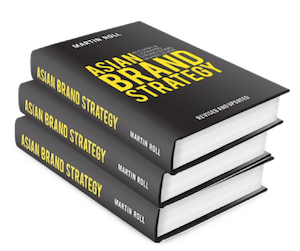
Asian Brand Strategy provides key insights and knowledge about the rising Asian brands incl. model frameworks, brand cases and checklists on Asian branding. Download sample chapter .
DRIVE IMPACT
Martin Roll enables global clients to deliver business impact and drive long-term value. Learn more about our services and how your company can get ahead
LATEST INSIGHTS
What is the purpose and value of a family office a global overview, fit for generations: the essentials of successful family business strategy, strategy and succession in family business – charting the future, banyan tree – branded paradise from asia.
- Harvard Business School →
- Faculty & Research →
- April 2003 (Revised December 2006)
- HBS Case Collection
ZARA: Fast Fashion
- Format: Print
- | Pages: 35
Related Work
- Faculty Research
- ZARA: Fast Fashion By: Pankaj Ghemawat and Jose Luis Nueno
Zara's Secret for Fast Fashion
by Kasra Ferdows, Michael A. Lewis and Jose A.D. Machuca
Editor's note: With some 650 stores in 50 countries, Spanish clothing retailer Zara has hit on a formula for supply chain success that works by defying conventional wisdom. This excerpt from a recent Harvard Business Review profile zeros in on how Zara's supply chain communicates, allowing it to design, produce, and deliver a garment in fifteen days.
In Zara stores, customers can always find new products—but they're in limited supply. There is a sense of tantalizing exclusivity, since only a few items are on display even though stores are spacious (the average size is around 1,000 square meters). A customer thinks, "This green shirt fits me, and there is one on the rack. If I don't buy it now, I'll lose my chance."
Such a retail concept depends on the regular creation and rapid replenishment of small batches of new goods. Zara's designers create approximately 40,000 new designs annually, from which 10,000 are selected for production. Some of them resemble the latest couture creations. But Zara often beats the high-fashion houses to the market and offers almost the same products, made with less expensive fabric, at much lower prices. Since most garments come in five to six colors and five to seven sizes, Zara's system has to deal with something in the realm of 300,000 new stock-keeping units (SKUs), on average, every year.
This "fast fashion" system depends on a constant exchange of information throughout every part of Zara's supply chain—from customers to store managers, from store managers to market specialists and designers, from designers to production staff, from buyers to subcontractors, from warehouse managers to distributors, and so on. Most companies insert layers of bureaucracy that can bog down communication between departments. But Zara's organization, operational procedures, performance measures, and even its office layouts are all designed to make information transfer easy.
Zara's single, centralized design and production center is attached to Inditex (Zara's parent company) headquarters in La Coruña. It consists of three spacious halls—one for women's clothing lines, one for men's, and one for children's. Unlike most companies, which try to excise redundant labor to cut costs, Zara makes a point of running three parallel, but operationally distinct, product families. Accordingly, separate design, sales, and procurement and production-planning staffs are dedicated to each clothing line. A store may receive three different calls from La Coruña in one week from a market specialist in each channel; a factory making shirts may deal simultaneously with two Zara managers, one for men's shirts and another for children's shirts. Though it's more expensive to operate three channels, the information flow for each channel is fast, direct, and unencumbered by problems in other channels—making the overall supply chain more responsive.
| Zara's cadre of 200 designers sits right in the midst of the production process. |
In each hall, floor to ceiling windows overlooking the Spanish countryside reinforce a sense of cheery informality and openness. Unlike companies that sequester their design staffs, Zara's cadre of 200 designers sits right in the midst of the production process. Split among the three lines, these mostly twentysomething designers—hired because of their enthusiasm and talent, no prima donnas allowed—work next to the market specialists and procurement and production planners. Large circular tables play host to impromptu meetings. Racks of the latest fashion magazines and catalogs fill the walls. A small prototype shop has been set up in the corner of each hall, which encourages everyone to comment on new garments as they evolve.
The physical and organizational proximity of the three groups increases both the speed and the quality of the design process. Designers can quickly and informally check initial sketches with colleagues. Market specialists, who are in constant touch with store managers (and many of whom have been store managers themselves), provide quick feedback about the look of the new designs (style, color, fabric, and so on) and suggest possible market price points. Procurement and production planners make preliminary, but crucial, estimates of manufacturing costs and available capacity. The cross-functional teams can examine prototypes in the hall, choose a design, and commit resources for its production and introduction in a few hours, if necessary.
Zara is careful about the way it deploys the latest information technology tools to facilitate these informal exchanges. Customized handheld computers support the connection between the retail stores and La Coruña. These PDAs augment regular (often weekly) phone conversations between the store managers and the market specialists assigned to them. Through the PDAs and telephone conversations, stores transmit all kinds of information to La Coruña—such hard data as orders and sales trends and such soft data as customer reactions and the "buzz" around a new style. While any company can use PDAs to communicate, Zara's flat organization ensures that important conversations don't fall through the bureaucratic cracks.
Once the team selects a prototype for production, the designers refine colors and textures on a computer-aided design system. If the item is to be made in one of Zara's factories, they transmit the specs directly to the relevant cutting machines and other systems in that factory. Bar codes track the cut pieces as they are converted into garments through the various steps involved in production (including sewing operations usually done by subcontractors), distribution, and delivery to the stores, where the communication cycle began.
The constant flow of updated data mitigates the so-called bullwhip effect—the tendency of supply chains (and all open-loop information systems) to amplify small disturbances. A small change in retail orders, for example, can result in wide fluctuations in factory orders after it's transmitted through wholesalers and distributors. In an industry that traditionally allows retailers to change a maximum of 20 percent of their orders once the season has started, Zara lets them adjust 40 percent to 50 percent. In this way, Zara avoids costly overproduction and the subsequent sales and discounting prevalent in the industry.
Excerpted with permission from "Rapid-Fire Fulfillment," Harvard Business Review , Vol. 82, No.11, November 2004.
[ Order the full article ]
Kasra Ferdows is the Heisley Family Professor of Global Manufacturing at Georgetown University's McDonough School of Business in Washington DC.
Michael A. Lewis is a professor of operations and supply management at the University of Bath School of Management in the UK.
Jose A.D. Machuca is a professor of operations management at the University of Seville in Spain.


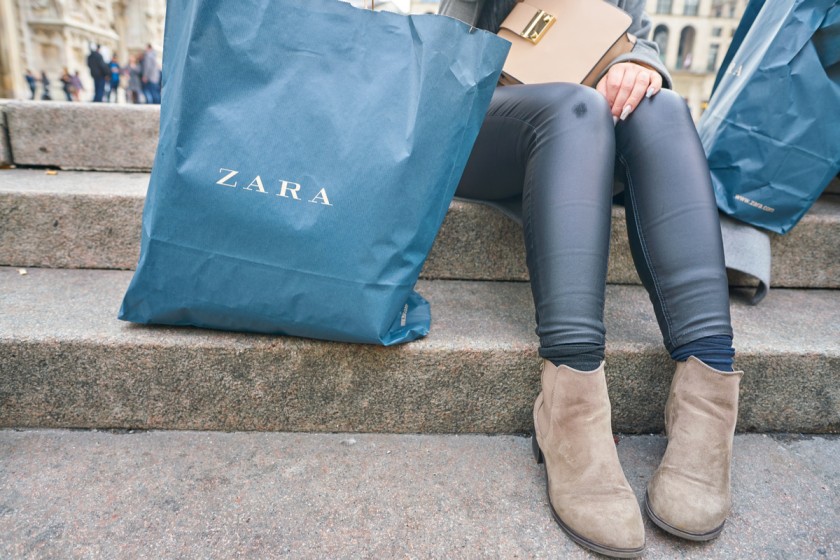





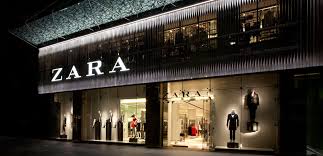


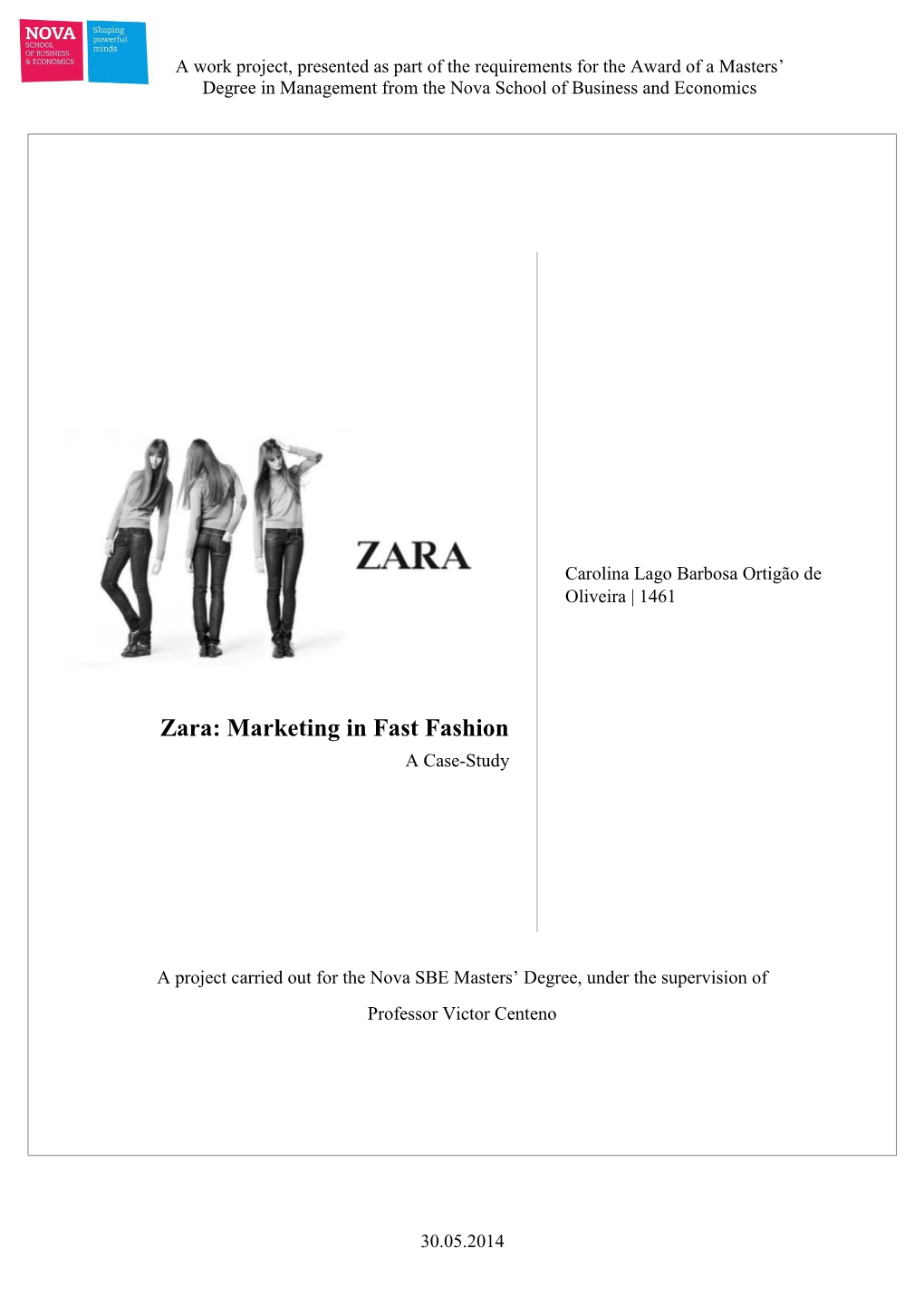

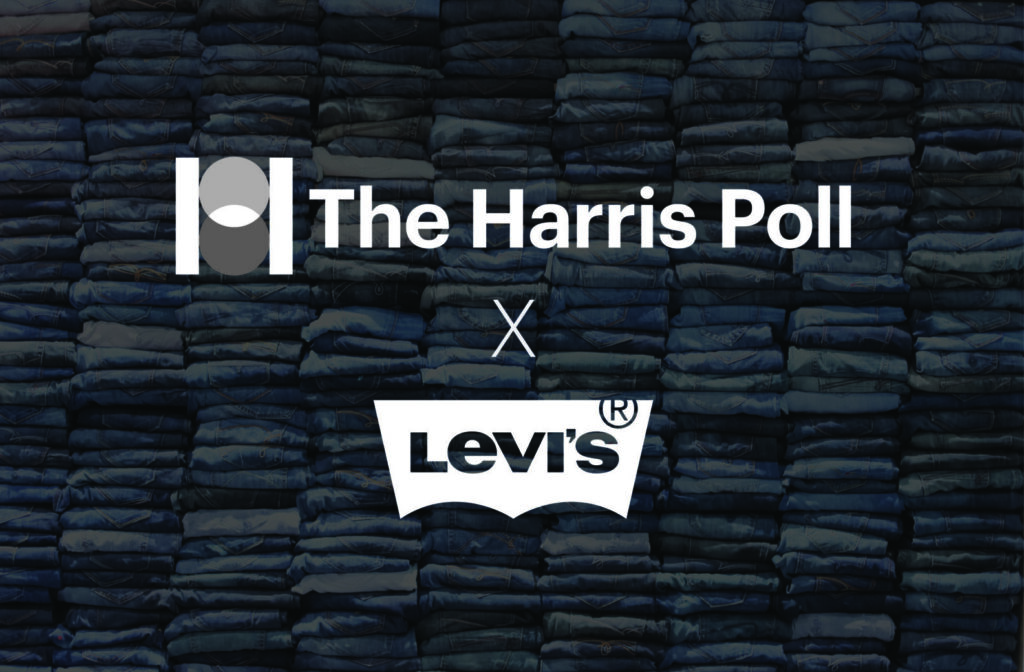
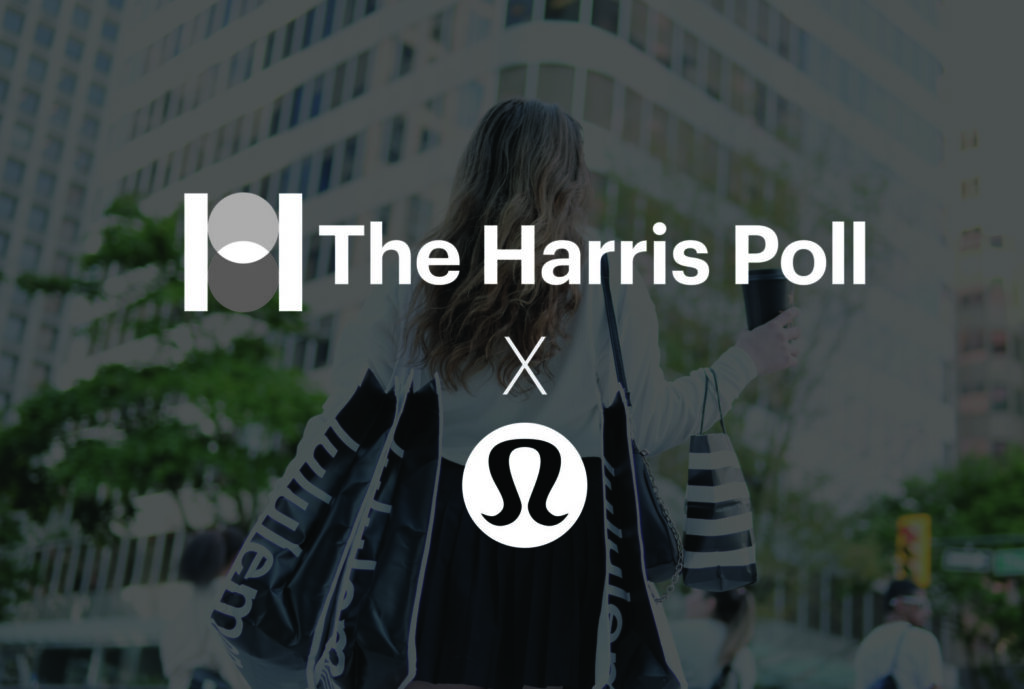



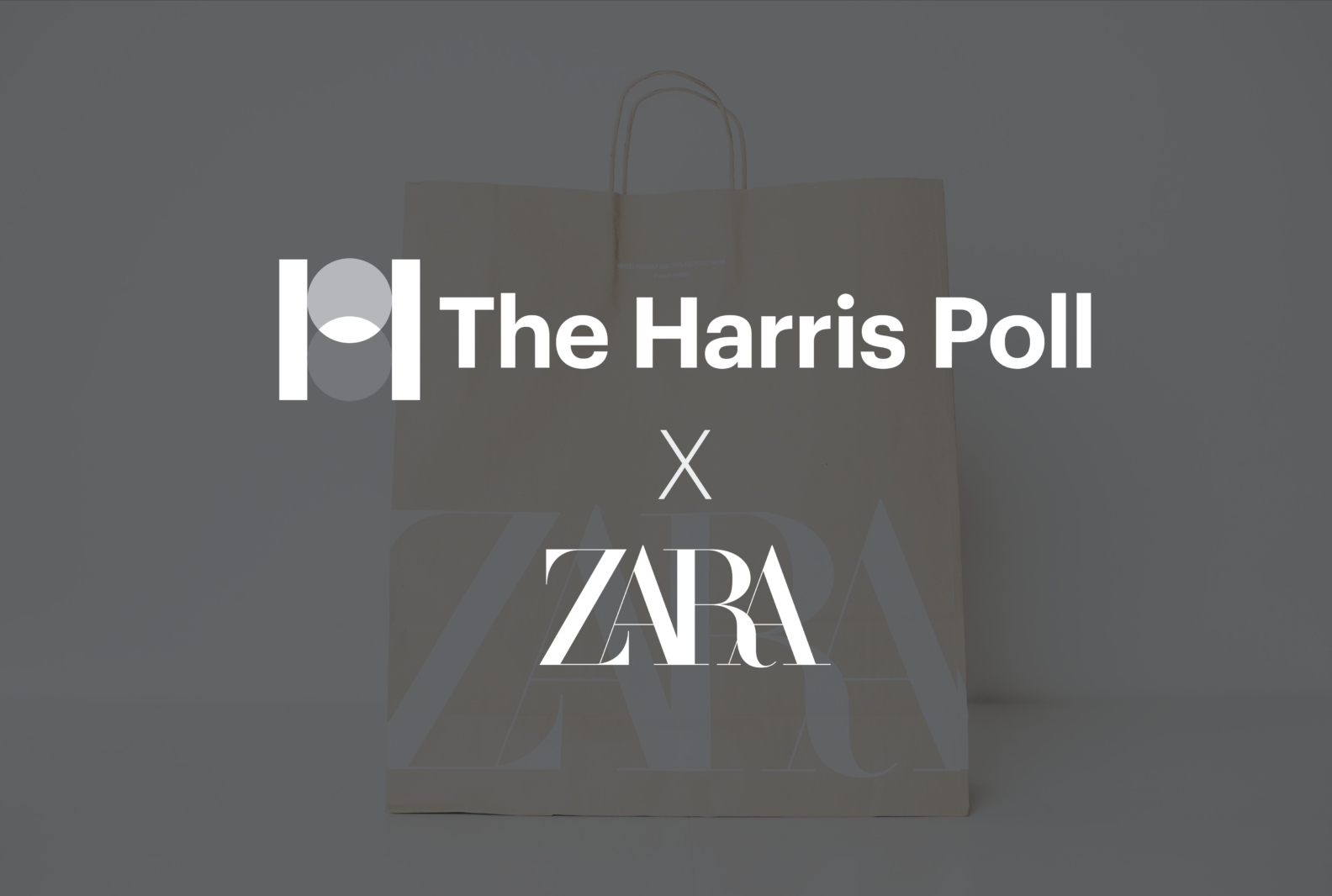

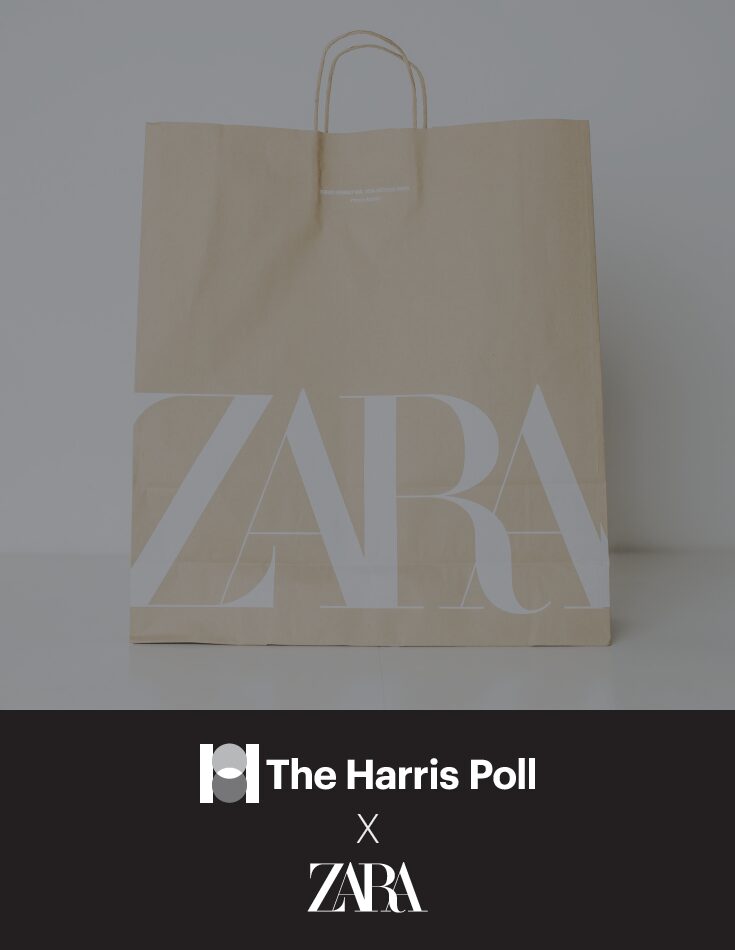



IMAGES
VIDEO
COMMENTS
Learn how Zara, the fast fashion pioneer, achieved success with its unique strategy and supply chain management. Read the case study on ResearchGate.
Zara's marketing is its own stores. {{cta('ba277e9c-bdee-47b7-859b-a090f03f4b33')}} The strategy of Zara and her Inditex sisters. Despite Zara's success (or because of it), Amancio Ortega created - or bought - multiple other brands that he included in the Inditex group, each one with a specific purpose. Zara was targeting middle-class ...
Customers feel like if they purchase a shirt at Zara, five others won't have that equivalent shirt at work or school. Read: Viral Marketing over the Long-Haul ft. Burger King Conclusion. Zara is a perfect case study to learn the perfect operations strategy, perfect marketing strategy, perfect pricing strategy, and whatnot.
In this article, we delve into the intricate layers of Zara's marketing, uncovering the secrets behind its success. Before dissecting Zara's marketing strategy, ... A 2024 Comprehensive Case Study. How to Market Your Finance Blog In 2024. Sonder Marketing Strategy. NBA Marketing Strategies And 4Ps In 2024. Similars.
In this marketing case study, we dive deeper into Zara's approach to marketing and business model that has set them apart from its competitors and established a loyal customer base ... You can also read marketing strategy case studies on Myntra and Nykaa for an online-first approach in fashion eCommerce industry. Copy link 19 8 2 1 19 8 0. Copy ...
In 2020, Inditex, Zara's parent company, held a market capitalization of an impressive $73.7 billion. This substantial valuation highlights Inditex's influential position in the market. Zara's Value. As of 2022, Zara's value soared to nearly $13 billion.
Analysis of Zara's fast-fashion retailing strategy with FIT Shelley E. Kohan, based on the 4Es model of marketing, where Experience replaces Product, Exchange in new Price, Evangelism is now ...
Zara is one of the most successful global fast fashion retail brands competing on design & styles, strong retail marketing, lean supply chain and strong corporate culture, Inditex is the world's largest fashion group with 170.000 employees, operating more than 7,400 stores in 96 markets worldwide and 49 online markets
Zara's 'Fast Fashion' Business Model. Zara's business model is basically based on the principle that it can sell "medium quality fashion clothing at affordable prices". Basically vertical integration and the ability to come up with a quick-response is a key factor to Zara's successful business model otherwise they would be no ...
Powered by ZARA's success, Inditex has expanded into 39 countries, making it one of the most global retailers in the world. But in 2002, it faces important questions concerning its future growth. ... Harvard Business School Case 703-497, April 2003. (Revised December 2006.) Educators; Purchase; Related Work. April 2003 (Revised December 2006 ...
ZARA: Fast Fashion Fashion is the imitation of a given example and satisfies the demand for social adaptation. . . . The more an article becomes subject to rapid changes of fashion, the greater the demand for cheap products of its kind. — Georg Simmel, "Fashion" (1904)
This Case Study has the objective of study Zara's strategies, from their supply chain until their marketing and communication strategies, and the strategy in the physical stores versus at the online store. Then the study will focus on the consumer: their behavior according to the different generations and the brand perception according to them.
Zara's Secret for Fast Fashion. 2/21/2005. Spanish retailer Zara has hit on a formula for supply chain success that works. By defying conventional wisdom, Zara can design and distribute a garment to market in just fifteen days. From Harvard Business Review. by Kasra Ferdows, Michael A. Lewis and Jose A.D. Machuca.
This is what makes Zara one of a kind in the fashion industry. The brand spends only 0.3% of its budget on promotion and advertising. The typical trend in the fashion industry is to spend about 3.5% on marketing and promotion. The brand doesn't believe in marketing as it saves them a lot of money and helps them with exclusivity.
Zara's product strategy is to create a sense of scarcity with a small number of items, thereby satisfying consumers' personalized needs for varied and unique clothing (Chunling 2020) . During the COVID-19 crisis, Zara has strengthened its digital presence (Popović-Šević et al. 2021). Currently, Zara offers online ordering, in-store pick-
Zara uses intensive data and analytics to manage a tight supply chain and give customers exactly what they want. Introduction. Zara's parent company Inditex has managed to thrive in the last decade while several other fashion retailers have faced declining sales or stagnant growth. Inditex has grown over 220% in annual revenue since 2004 ...
This poses a challenge for fast fashion brands represented by ZARA. The study used questionnaires to survey more than 300 Chinese consumers, understand their consumption habits, and measure ZARA ...
3.The Rise of Online Retail: The growth of online retail has changed the fashion industry. Consumers now have access to many online shopping options, including fast food stores. Zara competes to ...
From Zara, I would like to show appreciation for the help given by Pedro Vidigal, Marketing Director of Zara in Portugal, in the beginning of my thesis. Even though he could not give any ... Zara case study allows an overview on how good strategic decisions, product management and marketing management can be essential for a company's success ...
Case-Study Narrative . ZARA: Marketing in Fast Fashion In mid Spring/Summer season 2013, Óscar Pérez Marcote, Director of the Zara Business . Unit at Inditex since 20113, sat in his office preparing for a meeting with Inditex CEO . Pablo Isla Tejera. The intent of the meeting was to discuss Zara's current strategy and marketing approach in ...
Zara's "The Jacket" Came Under Fire for Parallels to Conflict in Gaza. To illustrate the value of brand tracking, we examined how Zara's controversial ad campaign impacted brand momentum. How did consumer perception of Zara change after the launch of their campaign? Download our case study to find out!
Zara - Introduction. Founded in 1975, ZARA, a Spanish clothing and accessories retailer was originally the brainchild of the Inditex Group owned by Amancio Ortega. Headquartered in A Coruña, Galicia, Spain, Inditex is the world's largest fashion retailer with ZARA as its international flagship chain store. Beginning with the single store ...
Case Study: Zara's Entry into Indian Retail Fashion Market. Zara is an extremely renowned brand, known for its latest designs and is among the top 100 best global brands in 2010 .It uses the unusual strategy of zero advertising and instead invests the revenue in opening new stores across the world. Zara is popular amongst old and young ...
Major retailers are today, most notably Amazon, are creating and operating their own advertising platforms — and they're making millions doing it. McKinsey estimates that by 2026, retail media ...
Case Studies: Emotional Intelligence In Action 1. Dove's "Real Beauty" campaign leveraged EI to challenge beauty stereotypes and engage women on issues of self-esteem.
Here, we explore four key case studies that highlight our capability to address complex staffing needs and drive tangible results. Case Studies of Recruitment Success with LHH . 1. National Commercial Real Estate Company: A leading company in commercial real estate sought to outsource their creative services nationally. LHH was chosen to ...